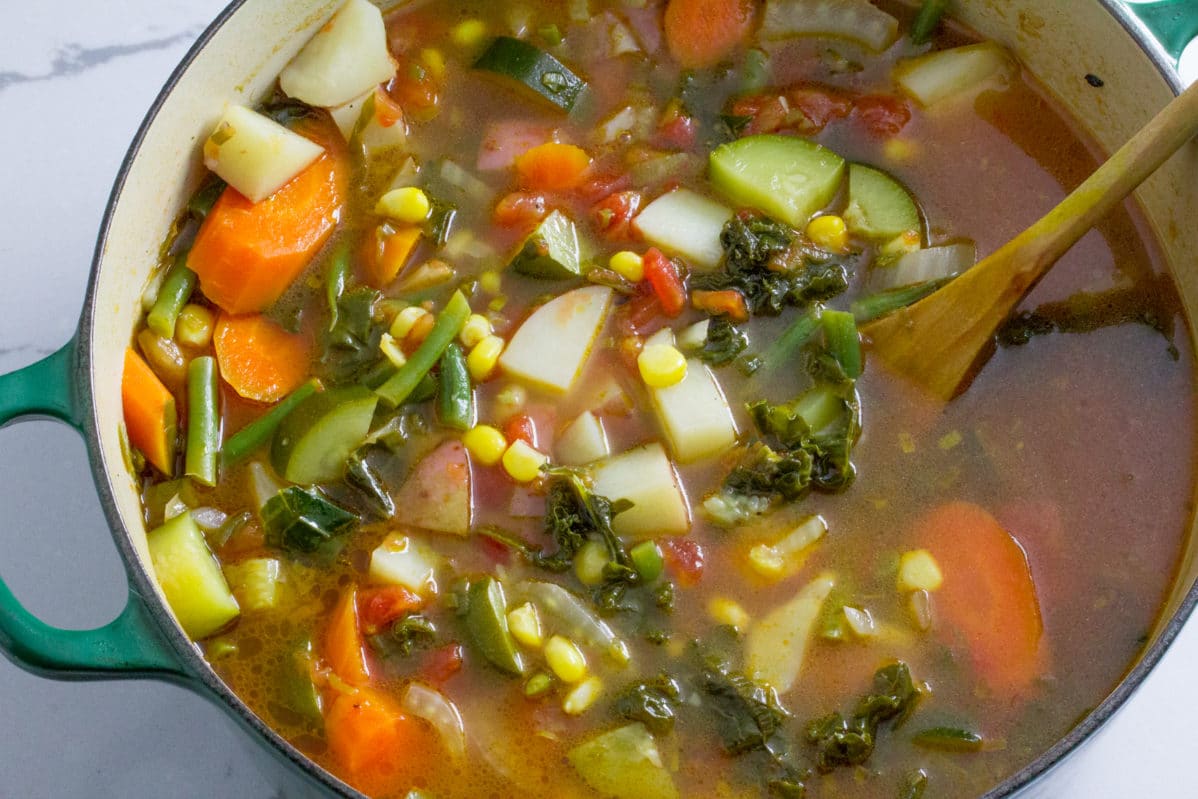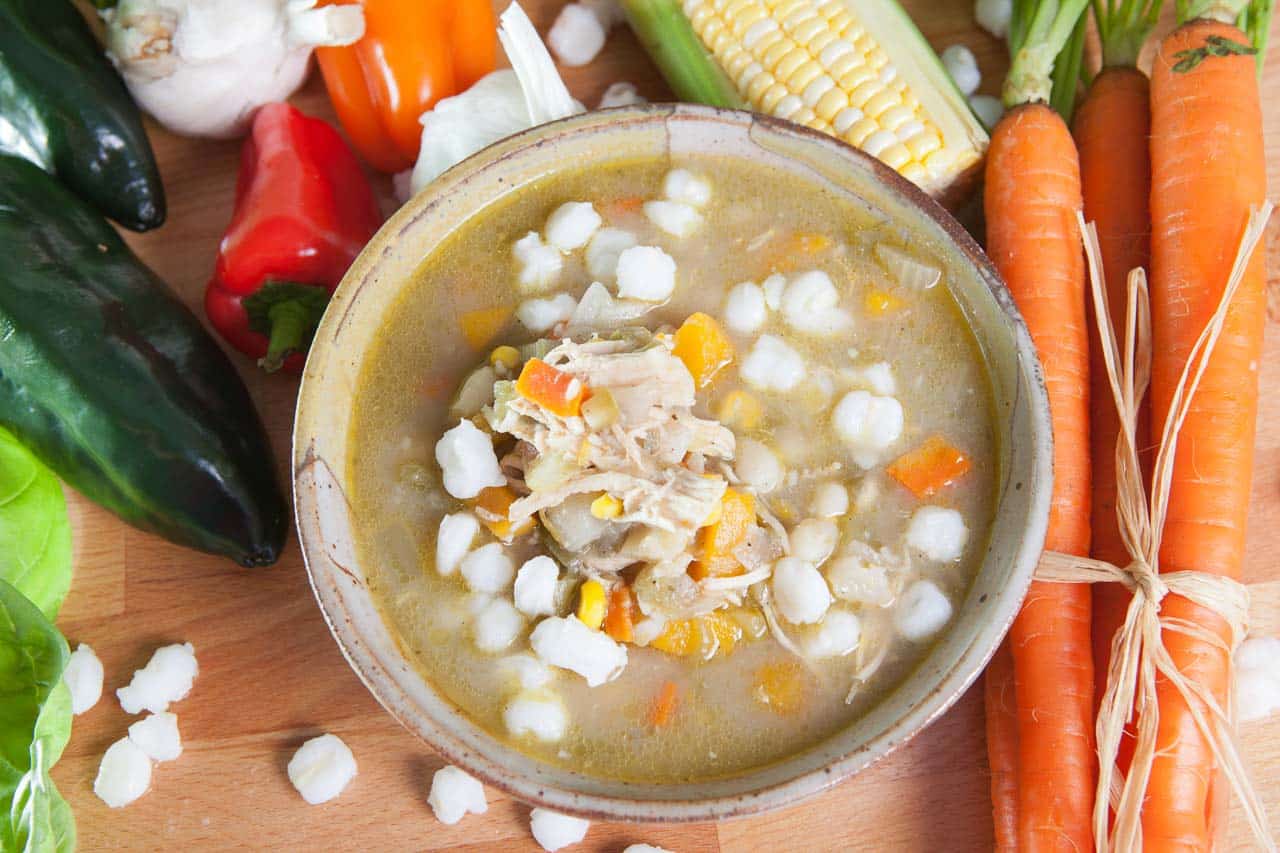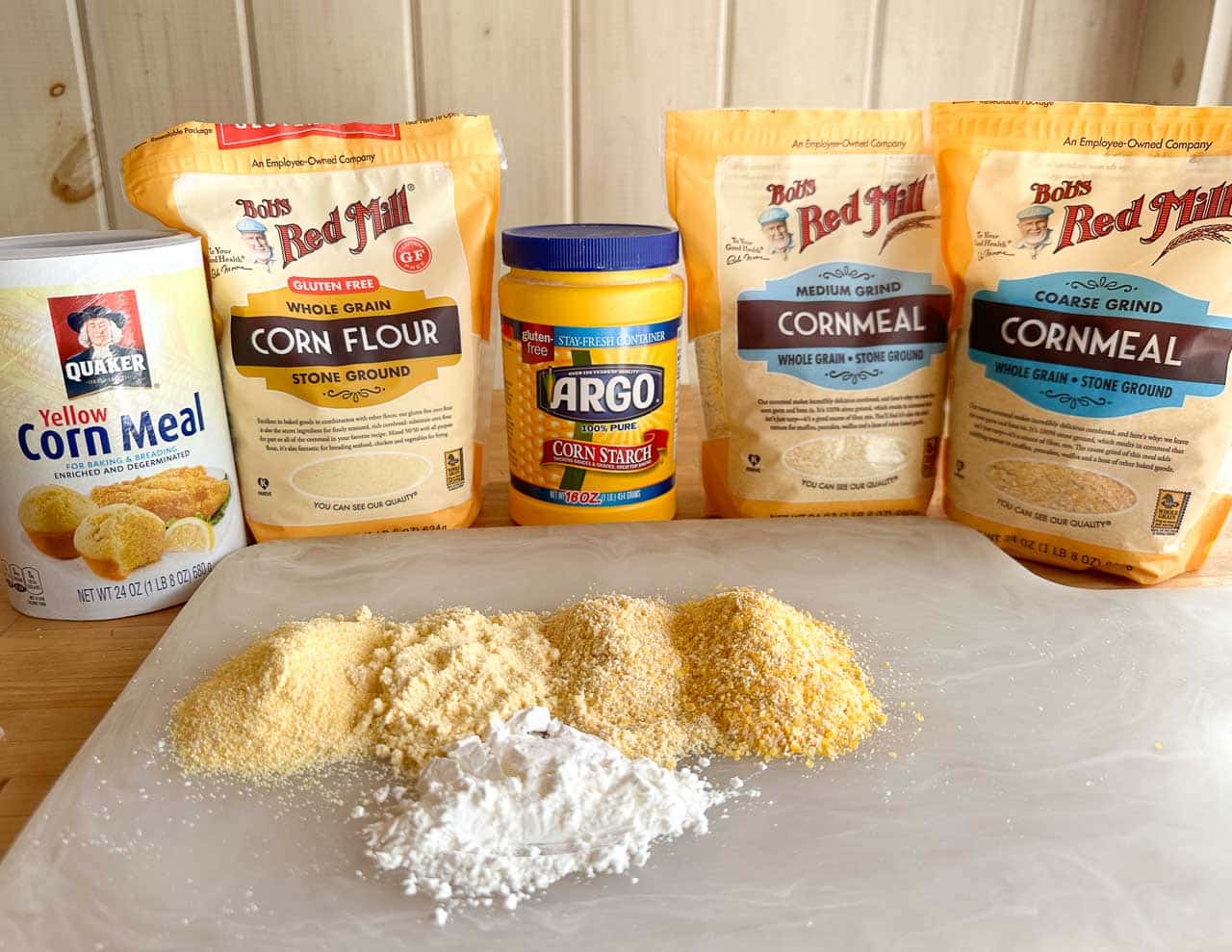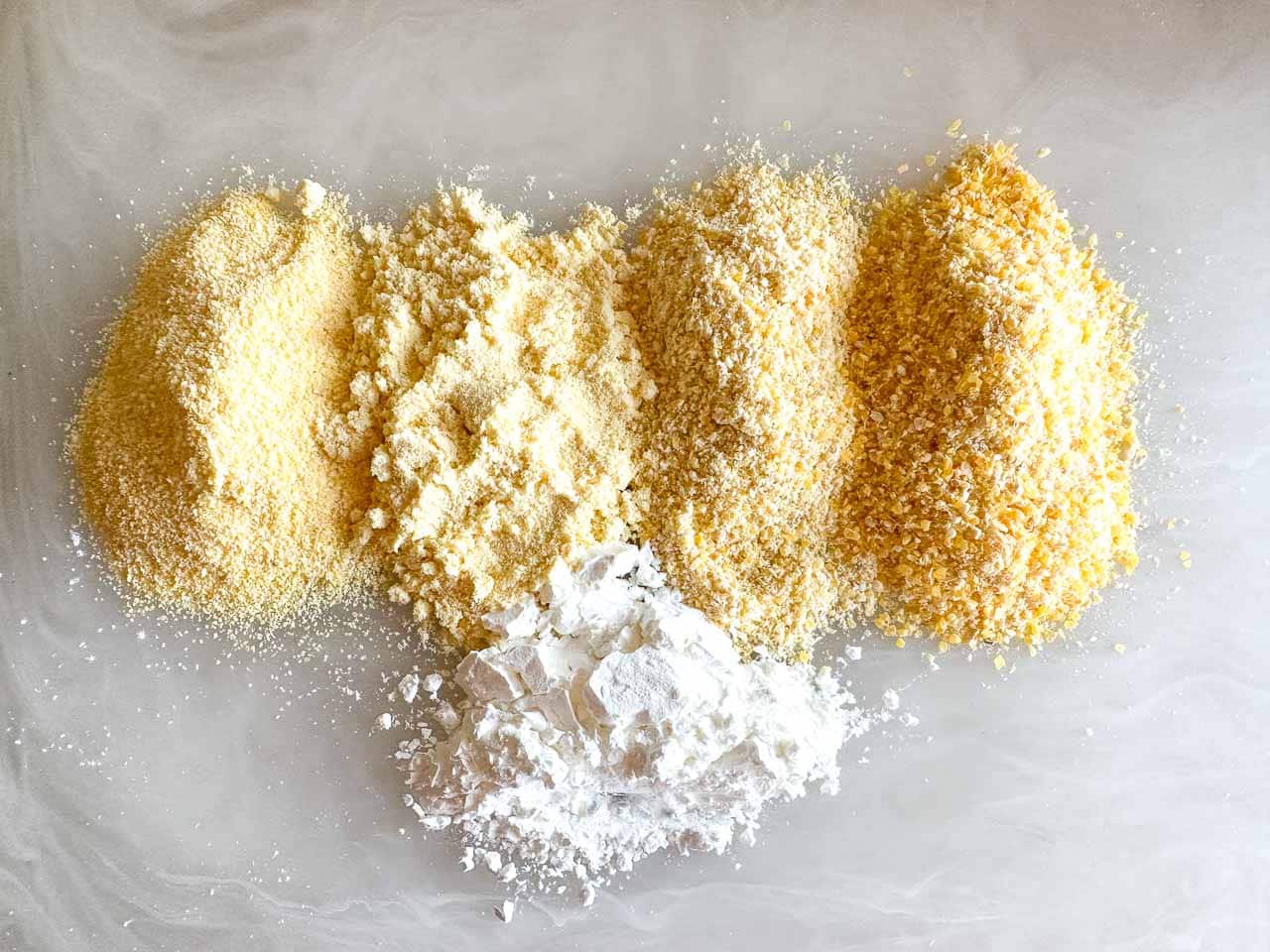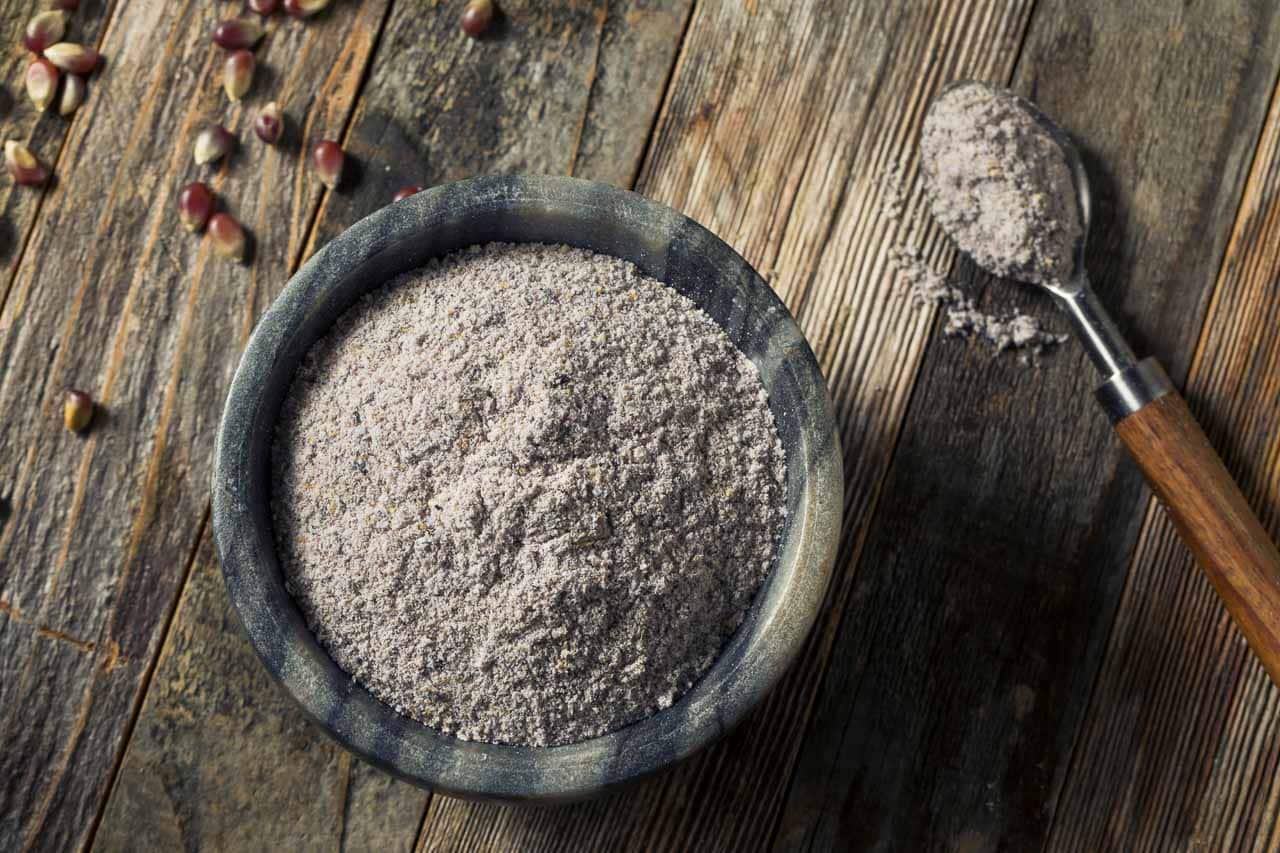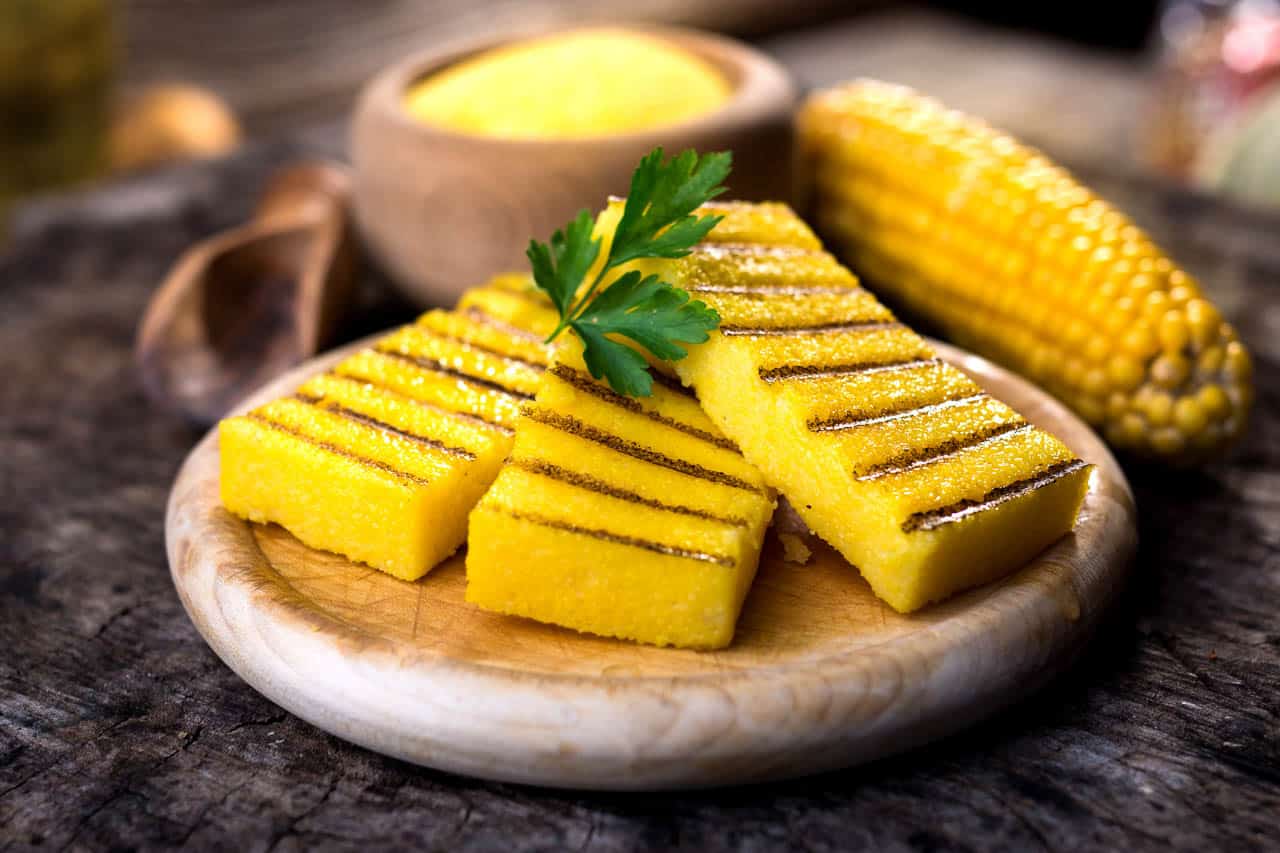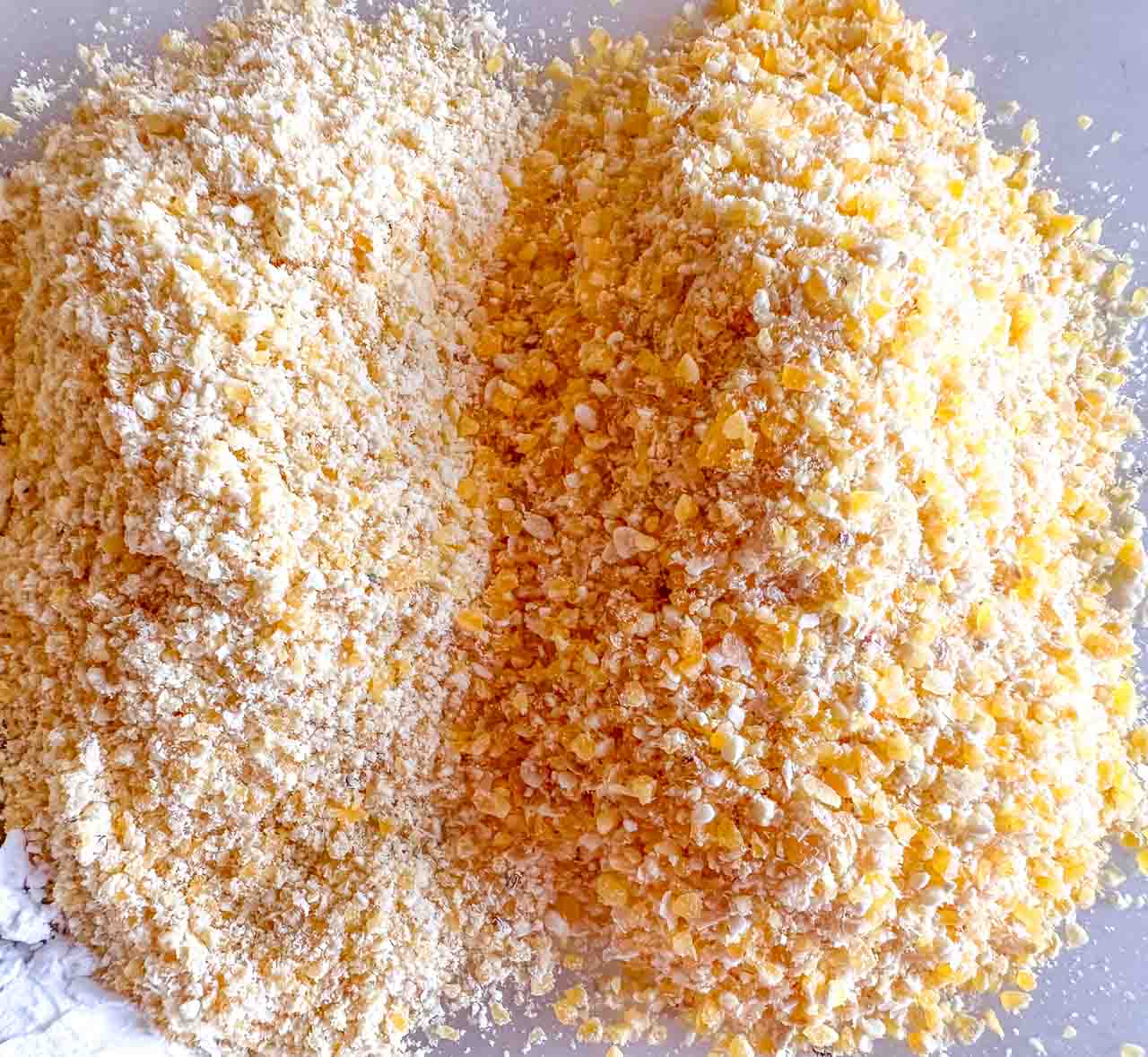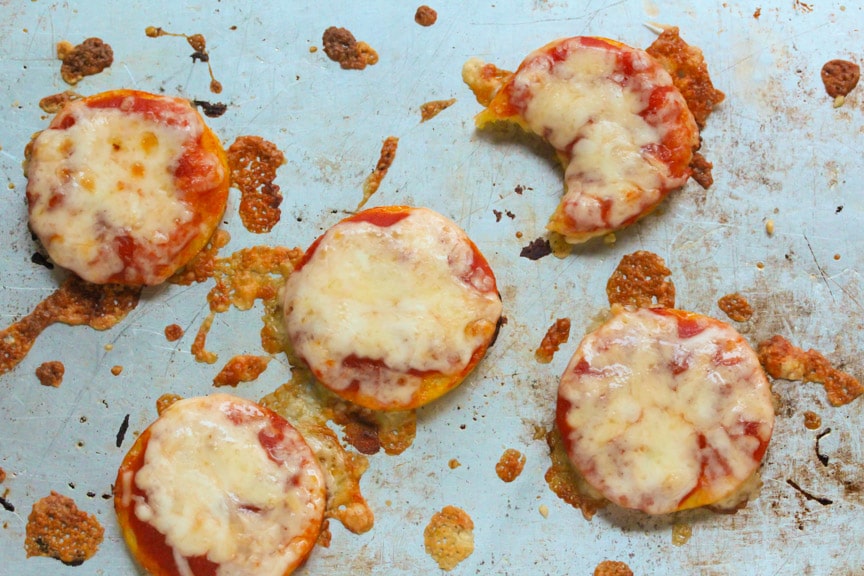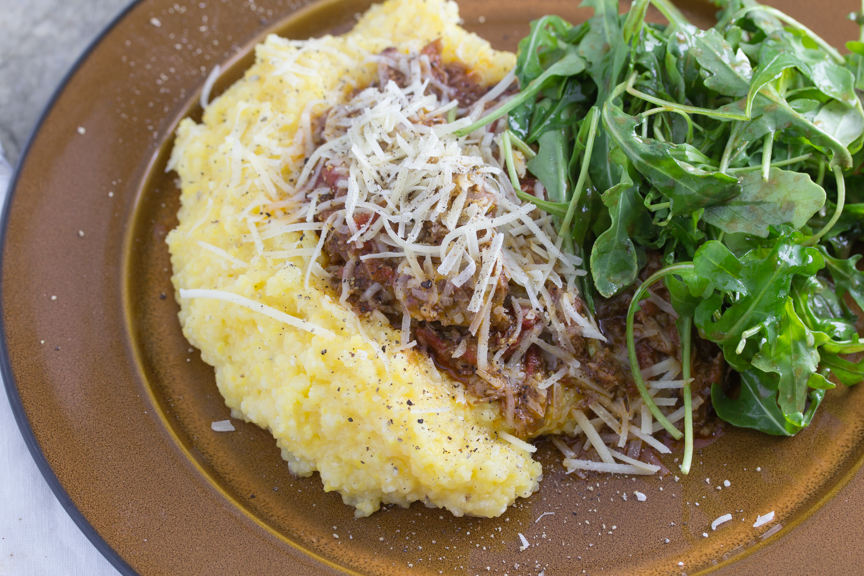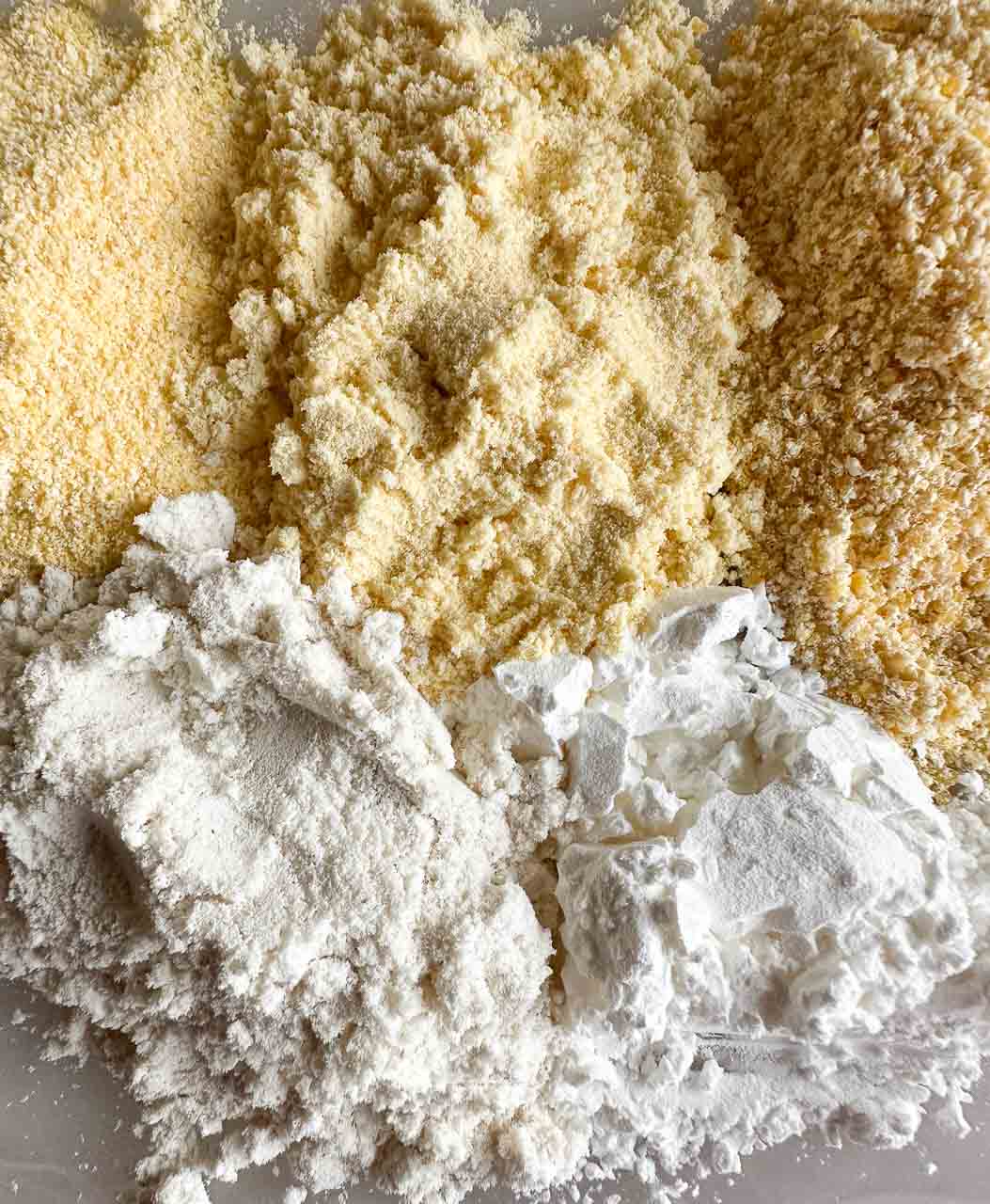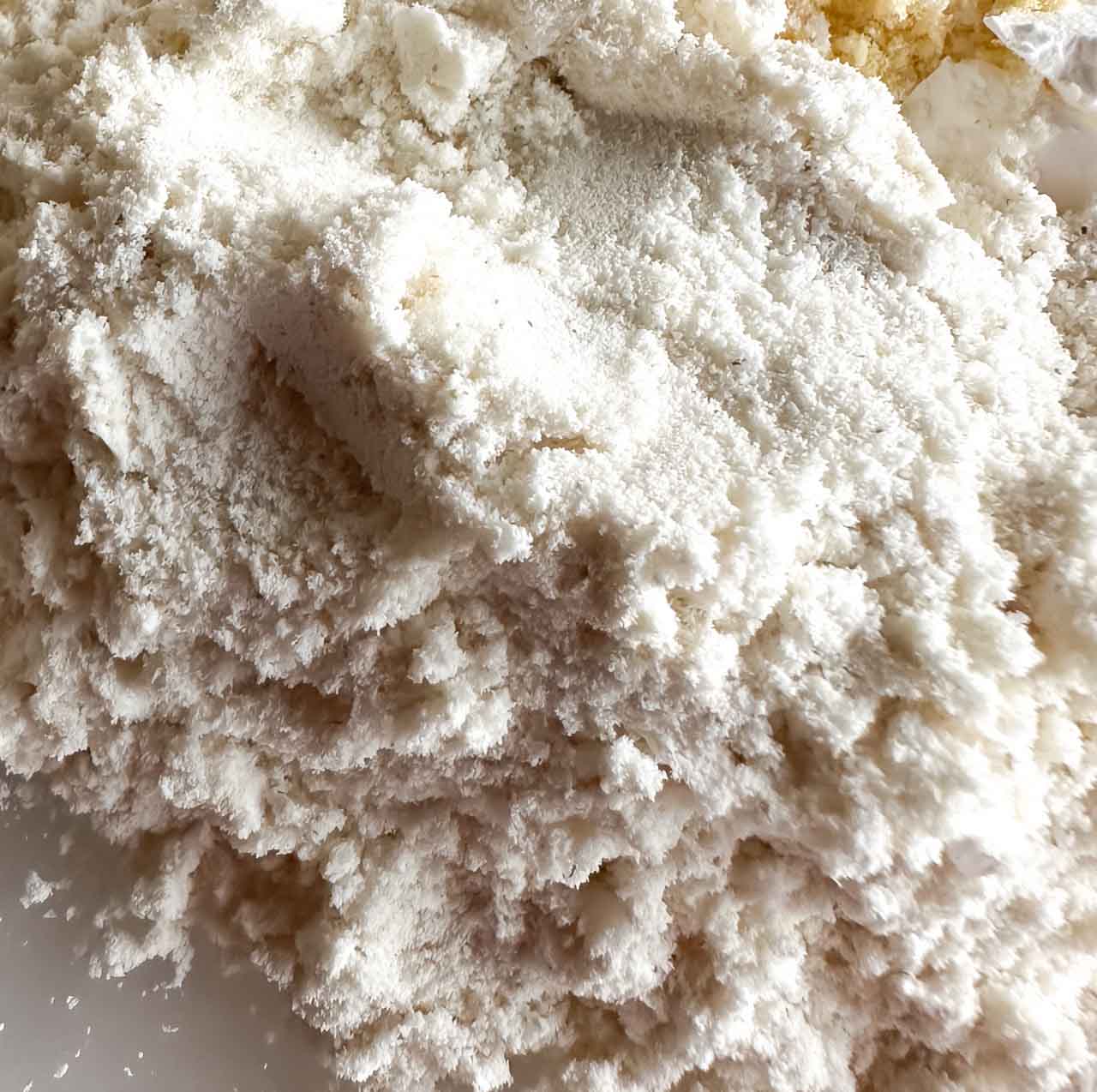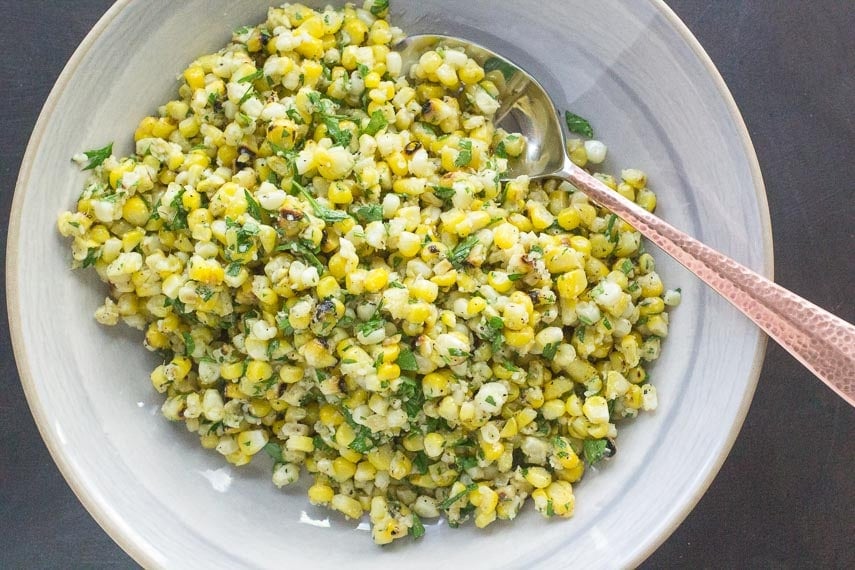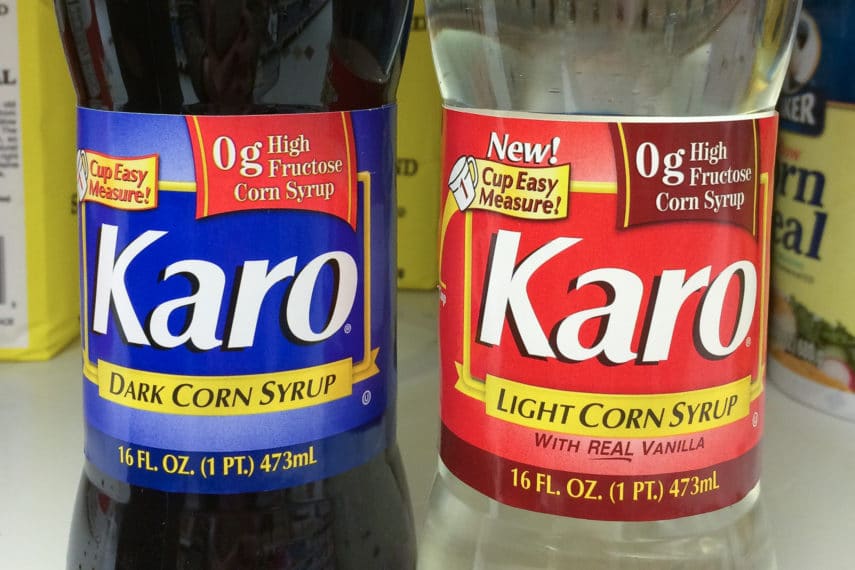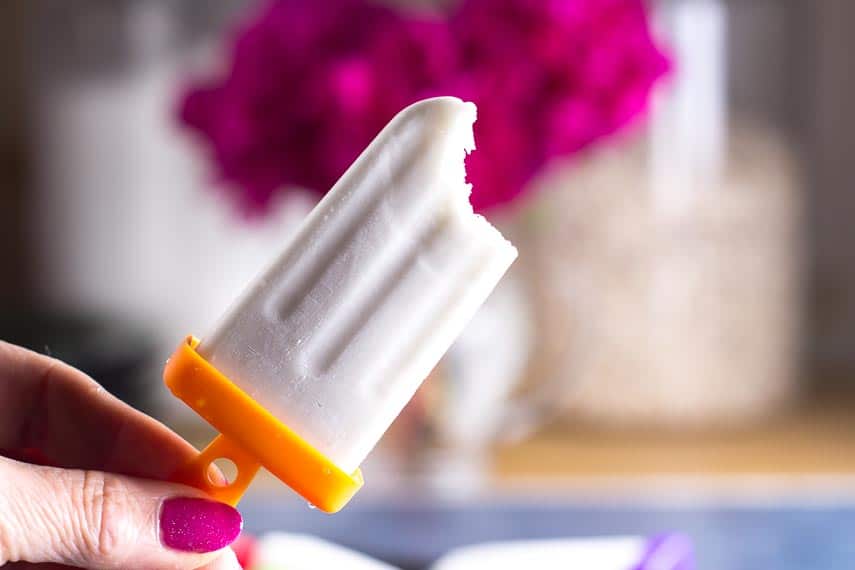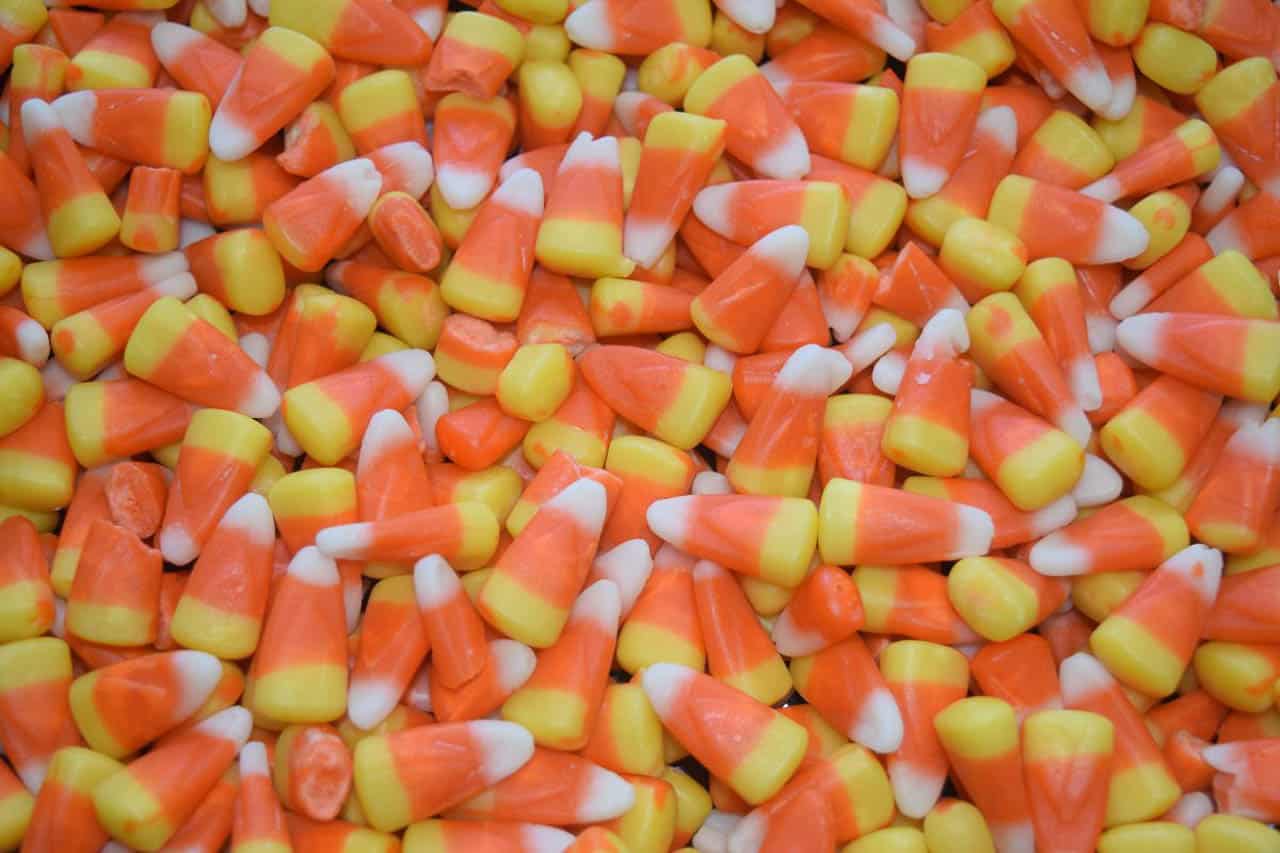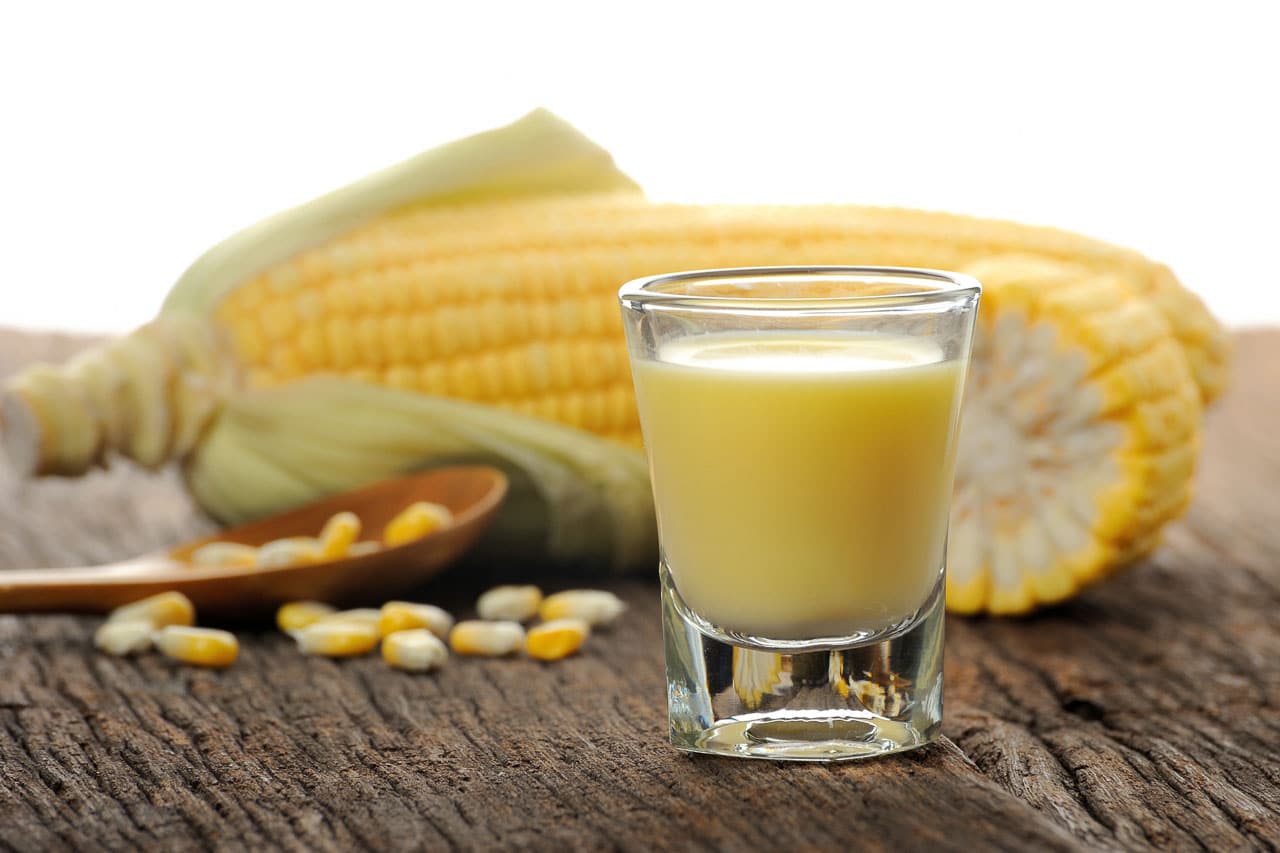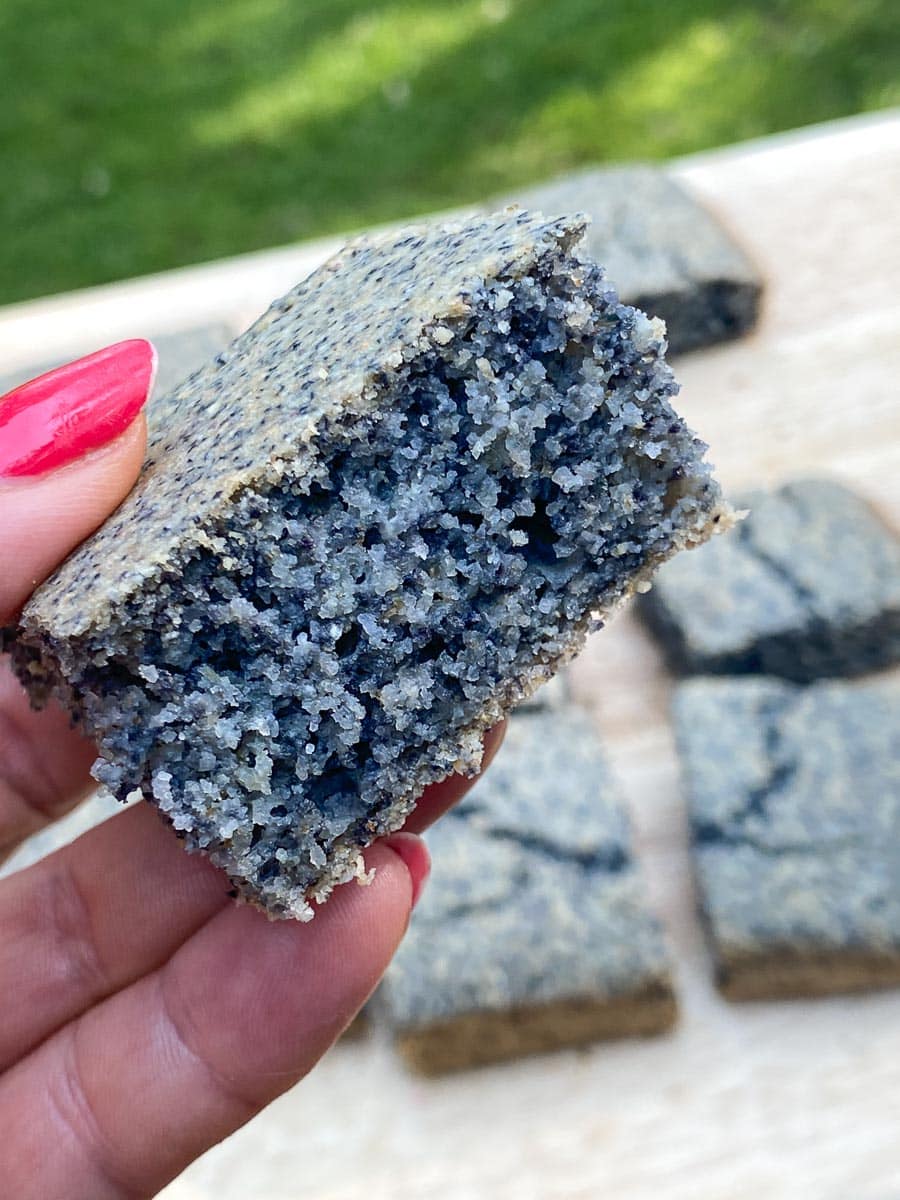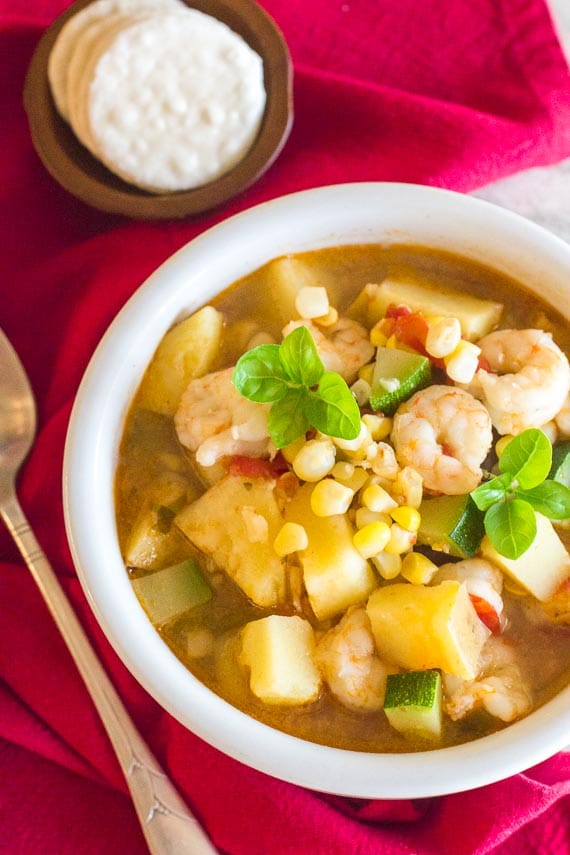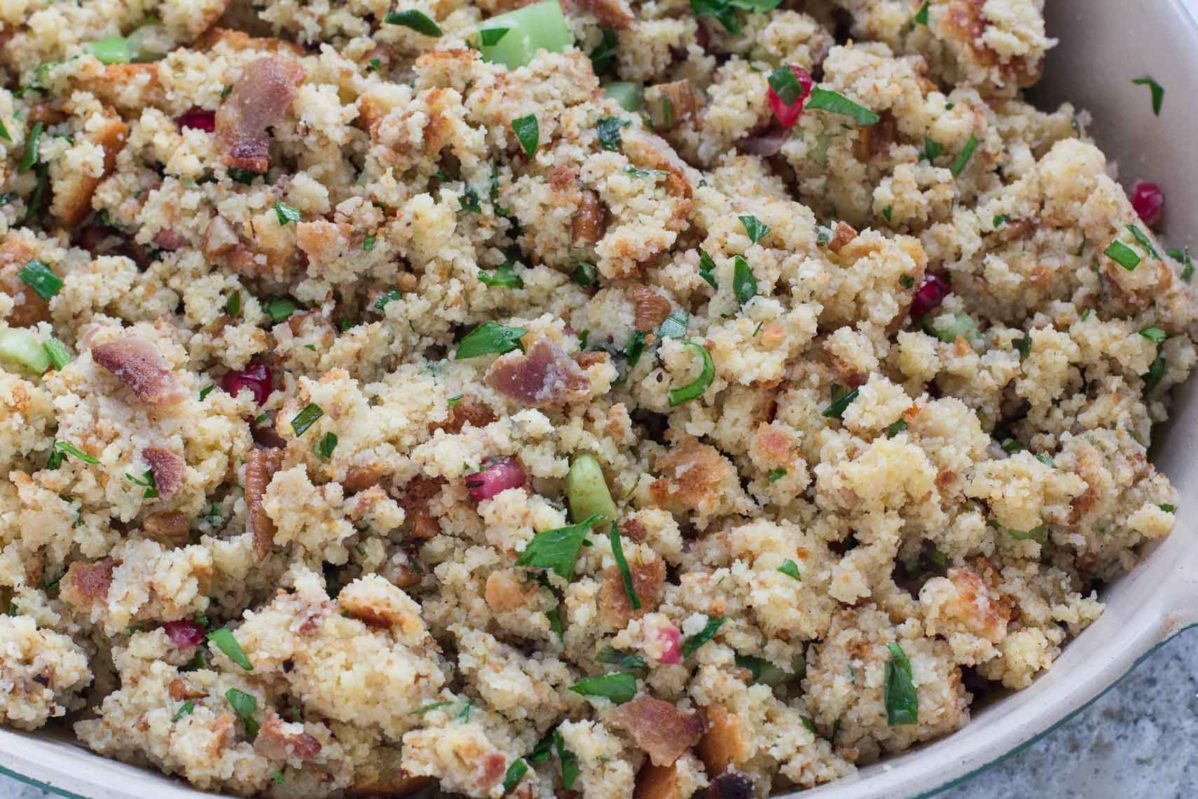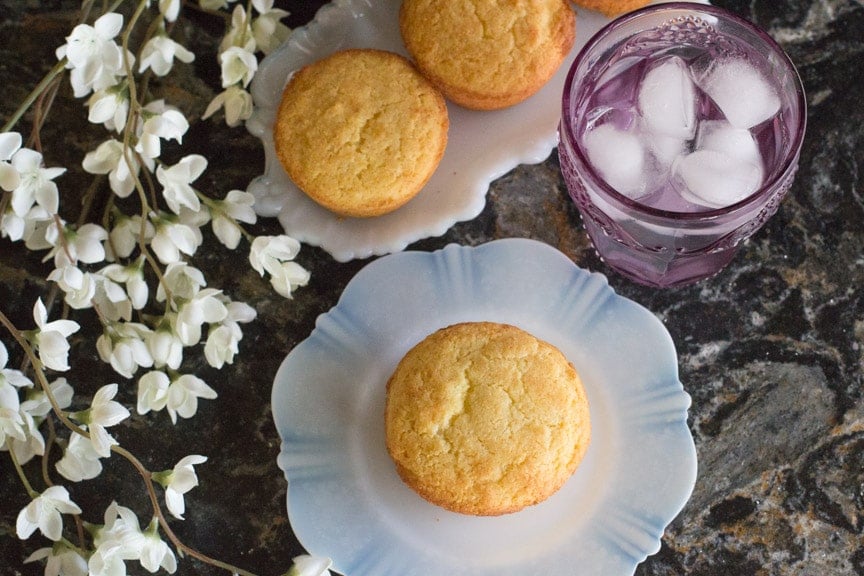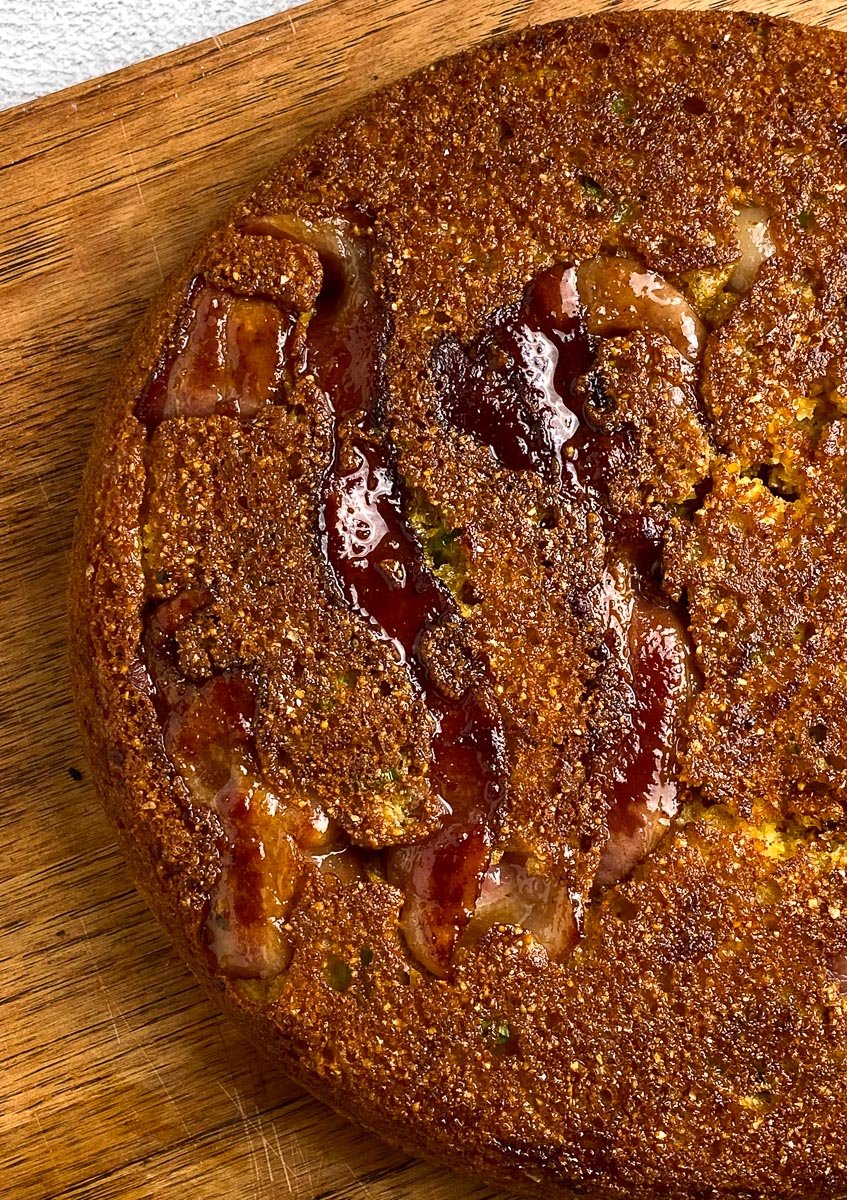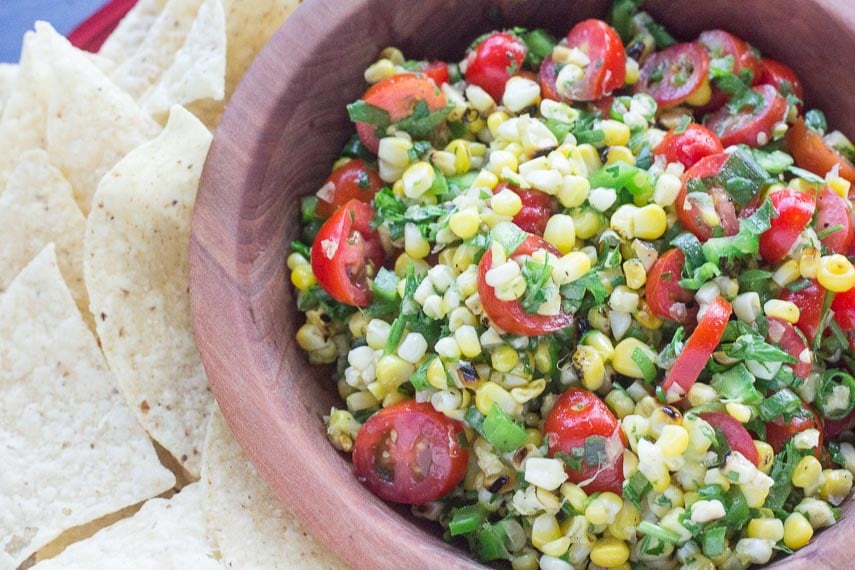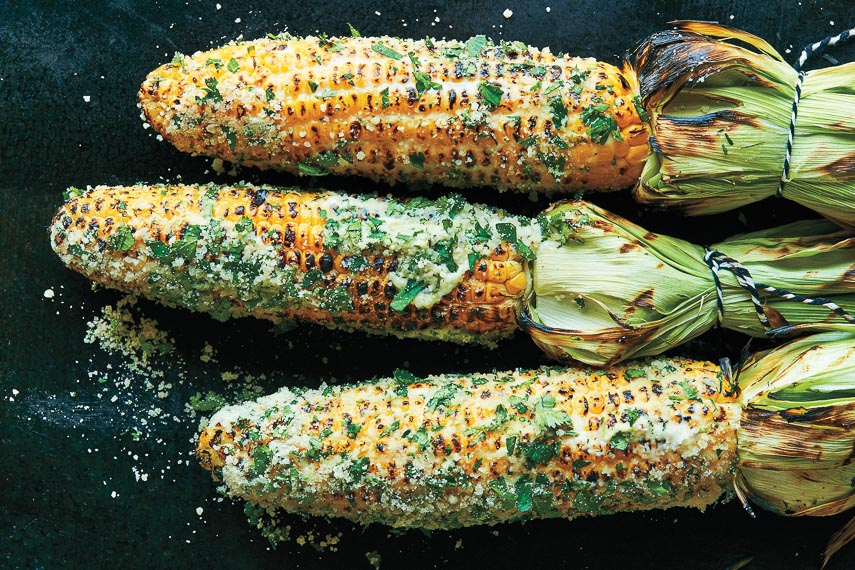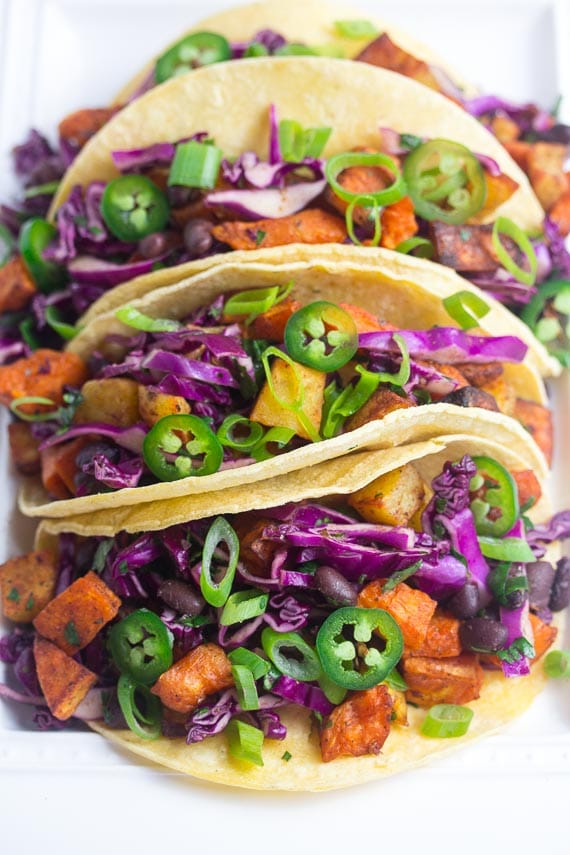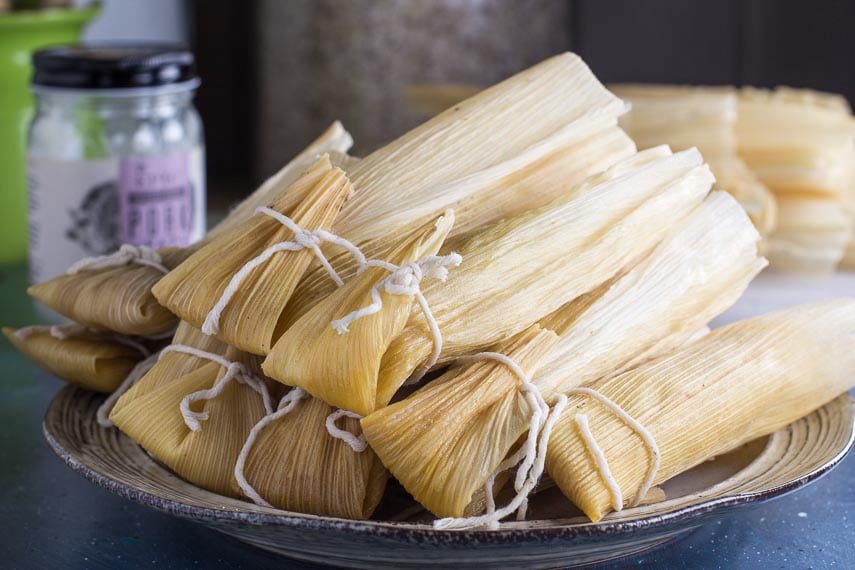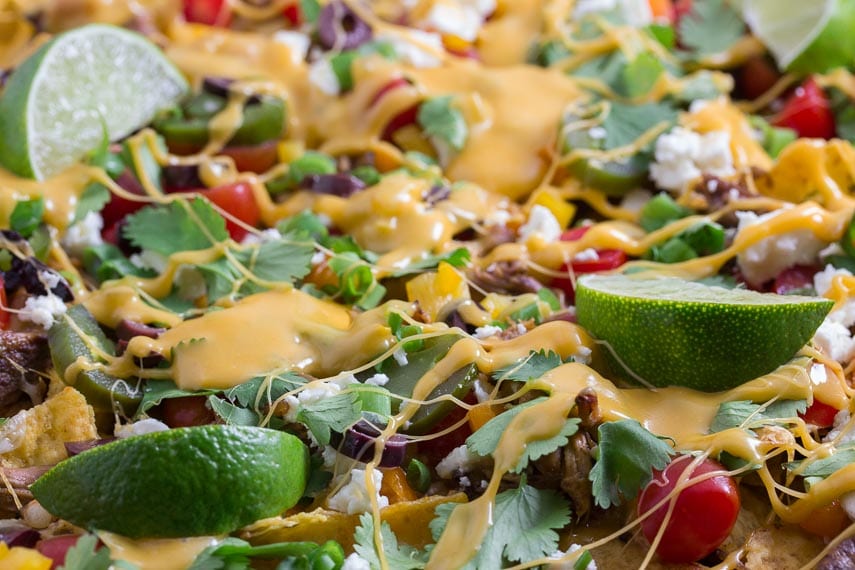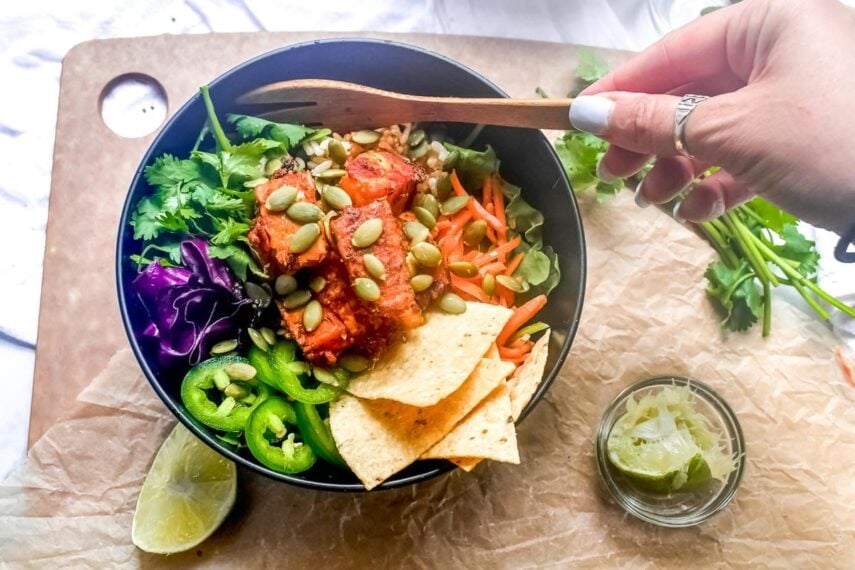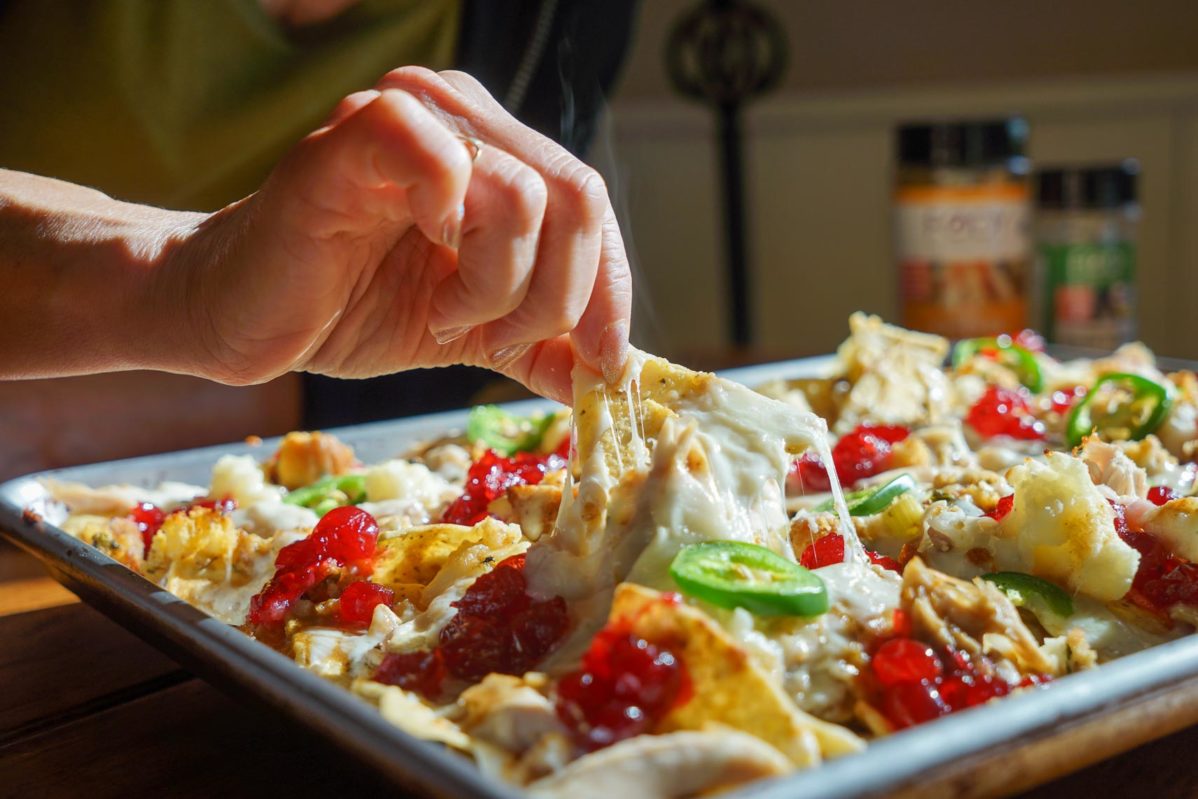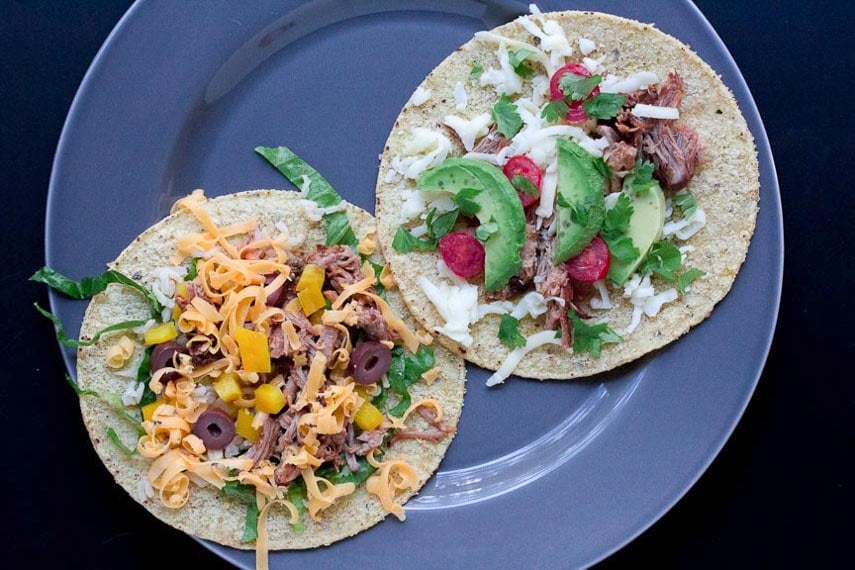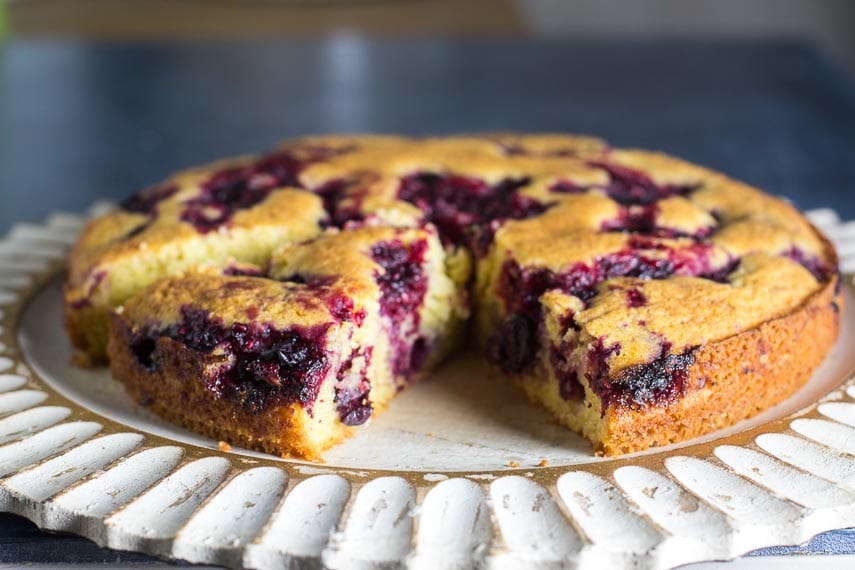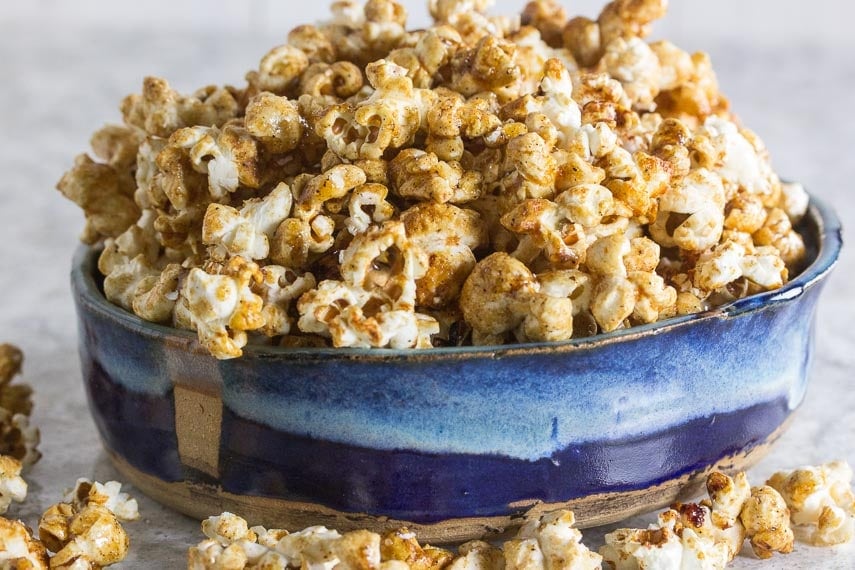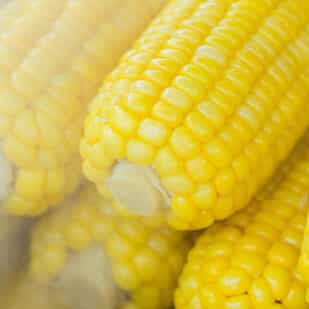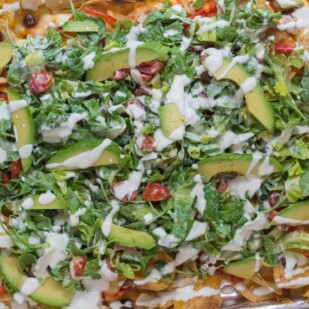Corn is a popular vegetable, and various kinds of corn are found in everything from tortilla chips, taco shells, corn on the cob, frozen corn kernels, and kernels in cans, cornmeal for baking and cooking, corn fiber used in prepared foods, popcorn – all this to say, there is a lot of corn in our foods. Is corn low FODMAP? The short answer is yes, but the longer answer is that not all corn is equal when it comes to FODMAPs.
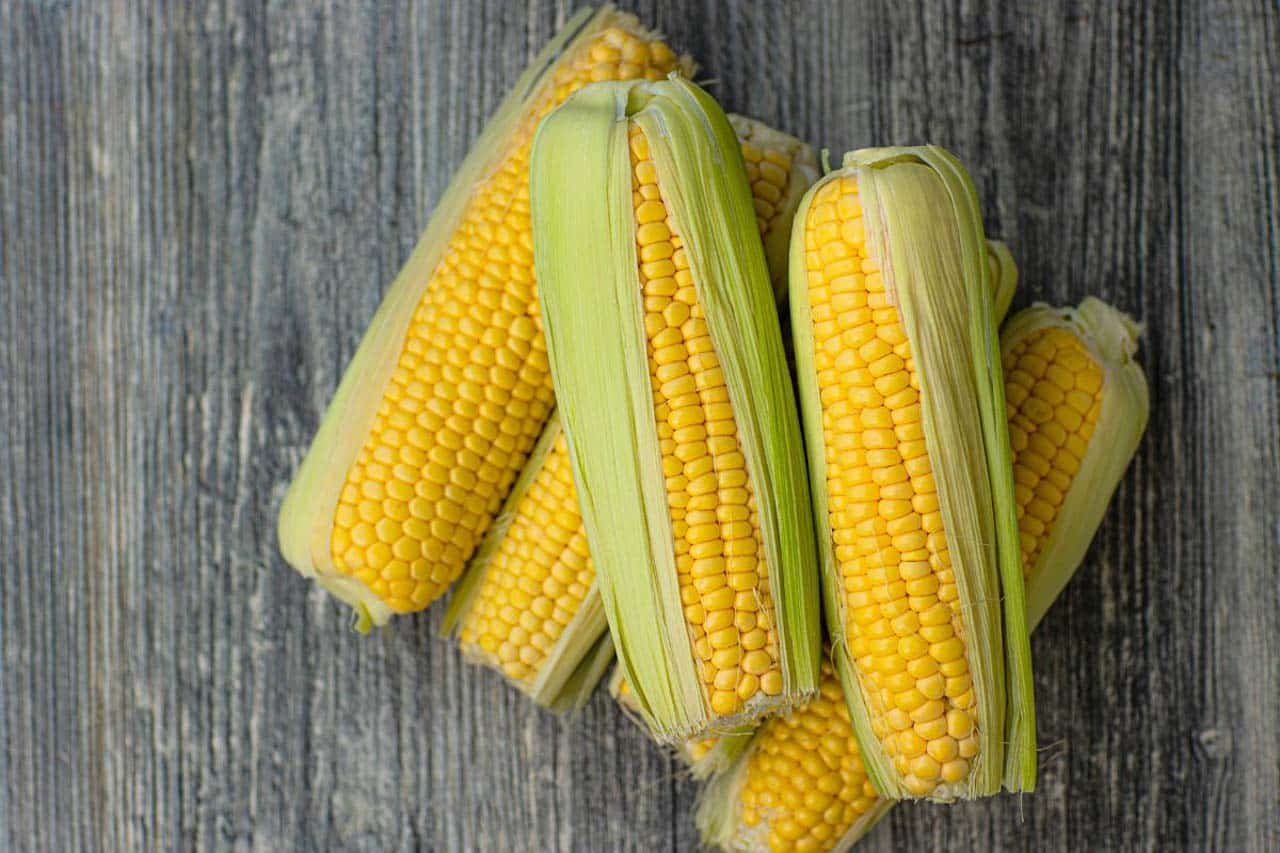
There is a lot to read here, but the reason we did this deep dive is because, as the saying goes, we like to teach you how to fish. With the information here, you will be able to make assessments about FODMAP content of whatever corn products you come across, even if they are not listed in the Monash University or FODMAP Friendly apps.
The highlight is that there are many different types of corn, and Monash University and FODMAP Friendly have not told us what varieties they lab tested, so really, the best way to assess the digestibility of any corn you eat is to sample it and take note. AND to realize that even if you do not digest one variety of corn on the cob well (as an example), you might with another! Same goes with one variety of cornmeal, and another. The fact that there is so much variability is good news.
You can also use this Table of Contents to jump to a section you would like to read, such as the section titled, FODMAP Lab Test Results For Various Corn Products.
How Many Kinds of Corn Are There?
First let’s address the fact that there are 6 types of corn.
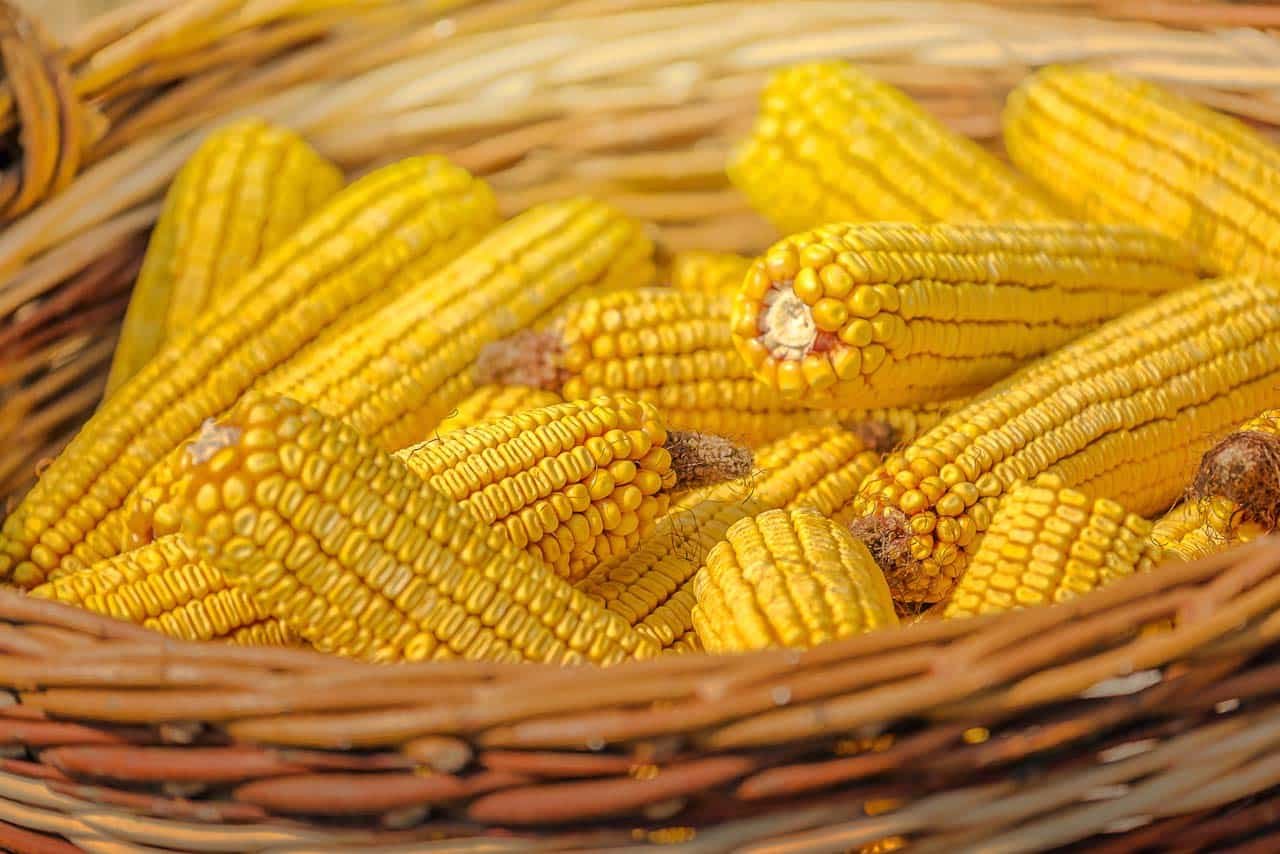
Dent Corn: Zea mays var. indentata, also known as grain corn, is a type of field corn with a high soft starch content. It is so named because of the small indentation, or “dent”, at the crown of each kernel on a ripe ear of corn. Most of the corn grown in the United States today is yellow dent corn, which is used in a large variety of ways in food manufacturing. There is also white dent corn.
Dent corn is used to make cornmeal, corn flour, corn chips, tortillas, and hard taco shells, for example. Starch derived from dent corn is made into fructose, a sweetener (high-fructose corn syrup) found in many processed foods and soft drinks. Some statistics state that 92% of dent corn is GMO (genetically modified). You can find heirloom and organic dent corn.
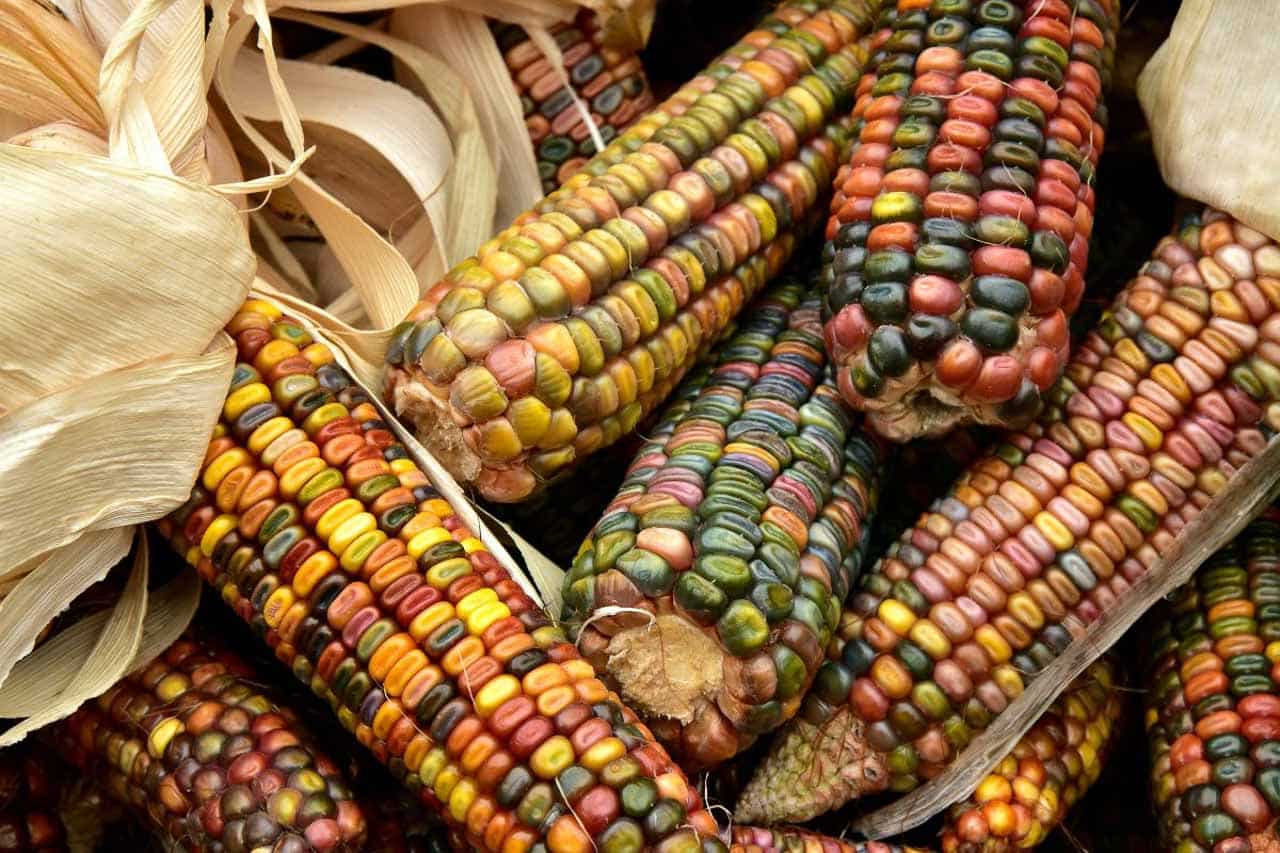
Flint Corn: Flint corn (Zea mays var. indurate) is also known as Indian corn, or sometimes calico corn. The kernels can be quite colorful. Each kernel has a hard outer layer and is likened to being hard as flint, hence the name. It is often dried and used ornamentally, still on the cob. Some are used for popcorn, and some for hominy (see below).
Flour Corn: Zea mays var. amylacea is a variety of corn with a soft starchy endosperm (interior) and a thin pericarp (exterior). The pericarp is the outer covering that protects the kernel and helps to maintain the kernel’s nutrient value and moisture content. It is about 91% fiber!
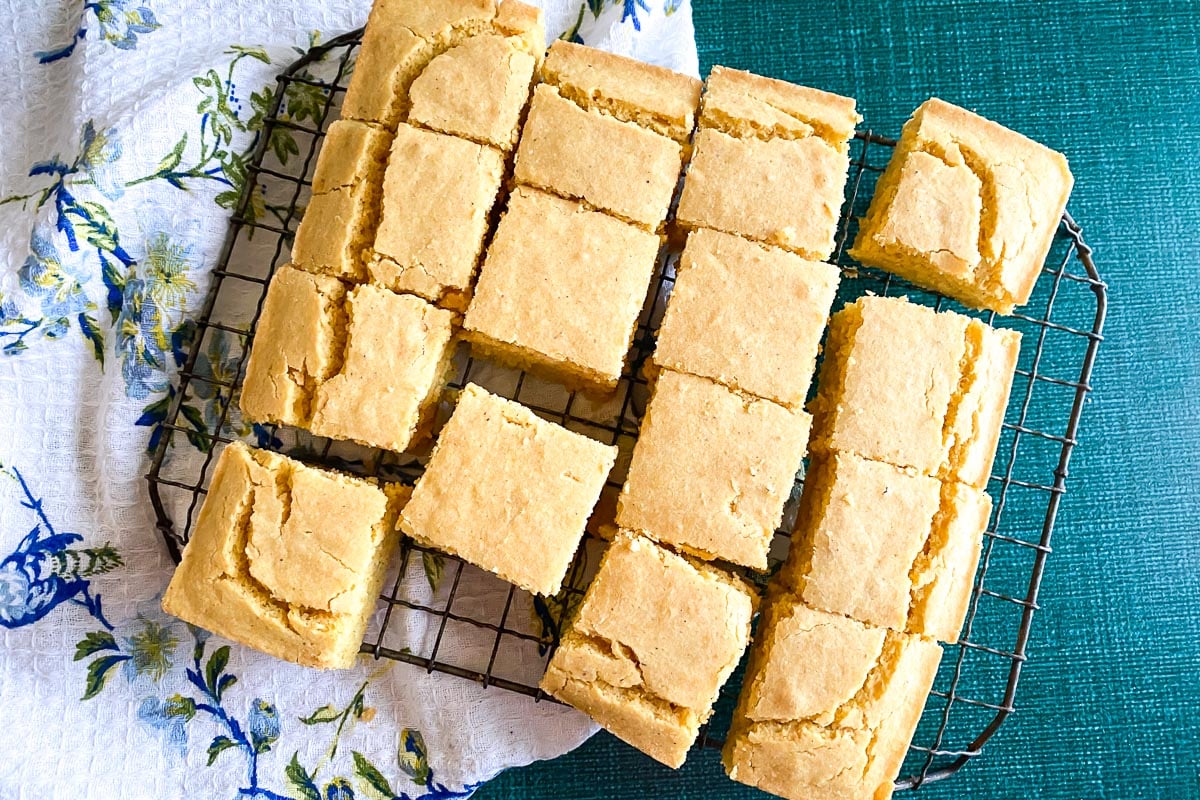
This type of corn is primarily used to make corn flour, but “corn flour” is not the same thing all over the world. In our Frequently Asked Questions section below we discuss the fact that nomenclature varies depending on where you are in the world. It is also important to note, in the Monash app there are several entries that say “corn flour” and the accompanying images are of various different products.
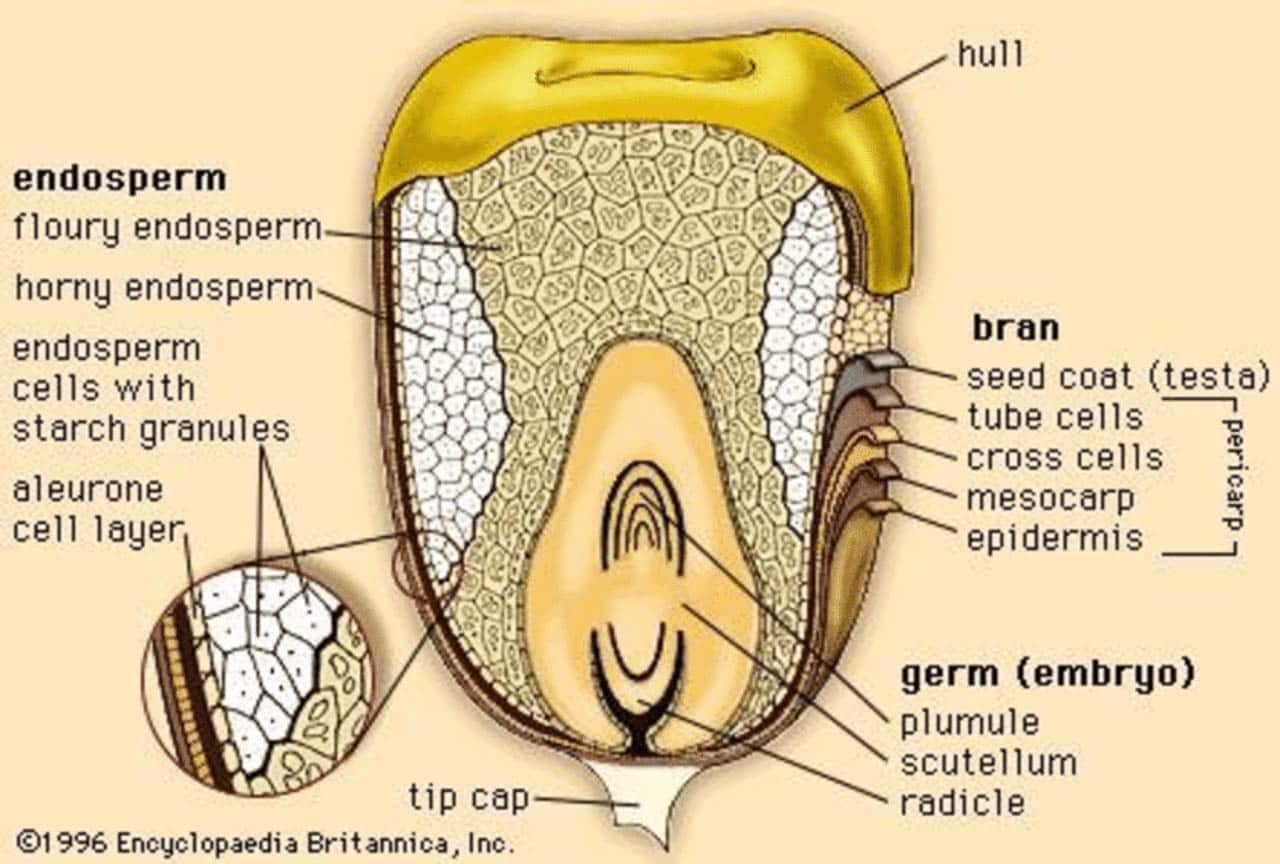
In the FODMAP Friendly app they differentiate between “corn flour” (image shows finely milled cornmeal), and “corn starch flour”, which is what Americans call cornstarch, so you wouldn’t necessarily be comparing similar ingredients across the apps, either.
Cornmeal and cornstarch are not interchangeable in recipes, and neither are various grinds or cornmeal. We know that some recipes tell you that they are, but the density, textures, and the ability to absorb moisture is so different, that we stand by this statement. In other words, if a recipe calls for medium grind cornmeal, do not use coarse.
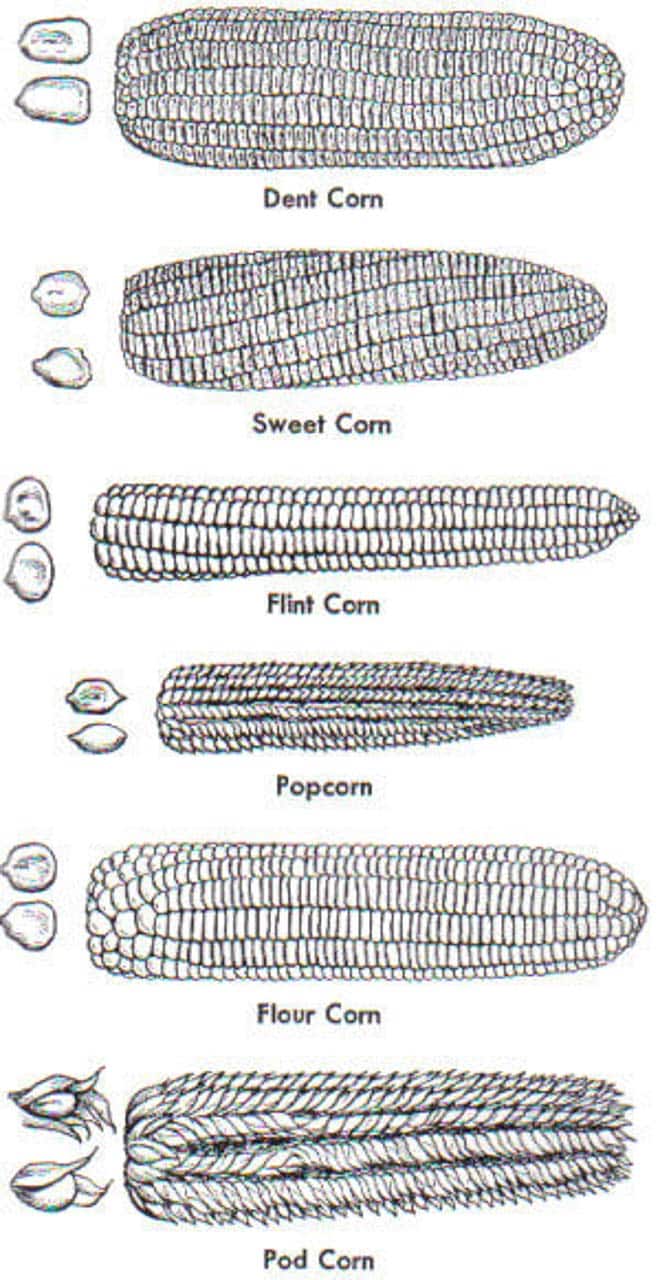
Pod Corn: Pod corn (not “pop”corn) is instantly recognizable for its look. The kernels are enveloped by husks, and similar to other corn varieties, the ear is also protected by a husk (see bottom of diagram, above). Various cobs will display a range of traits, due to the fact that it is self-sterile. Its kernels come in various forms such as dent, flint, flour, pop, sweet, or waxy. It is ornamental and its cultivation is largely for decorative purposes.
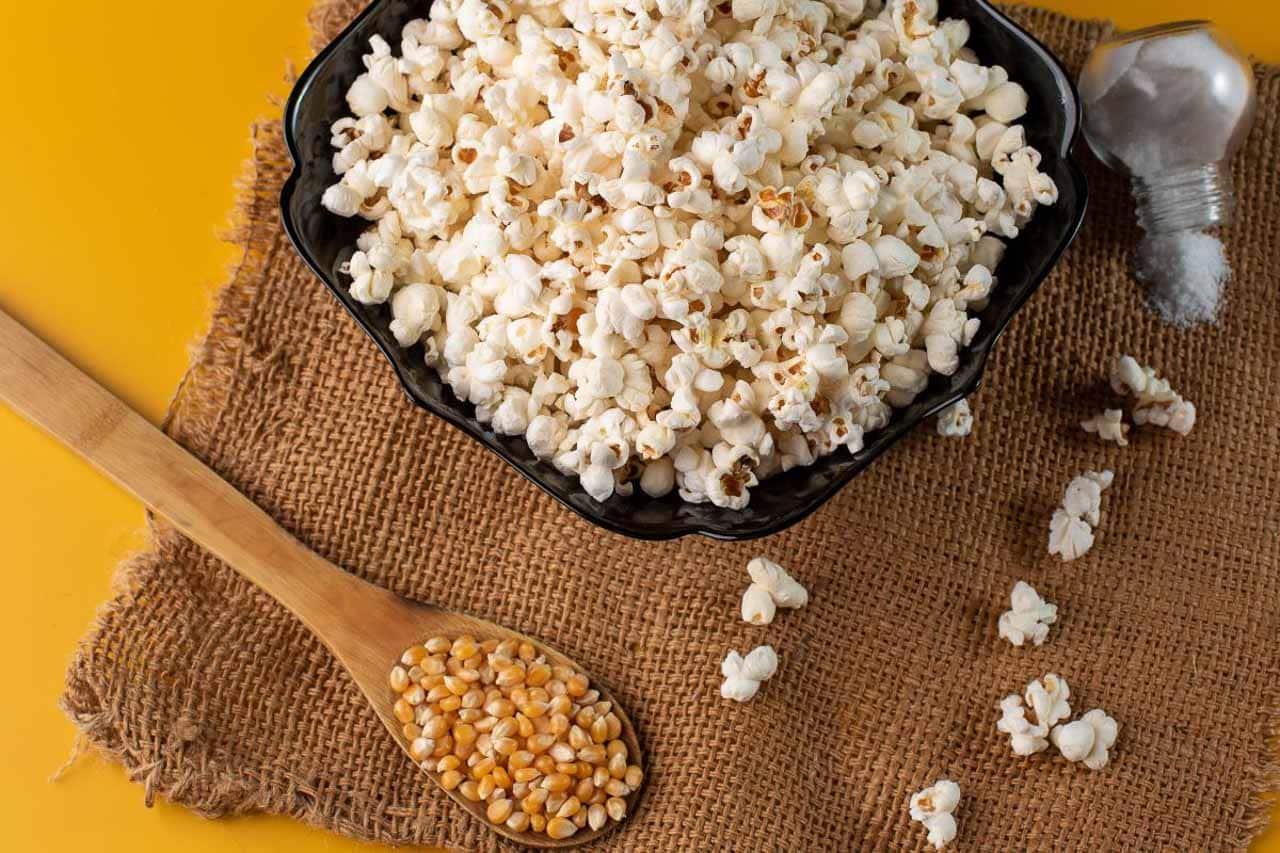
Popcorn: Historically, popcorn stands out as one of the earliest extant corn varieties and is believed to have been grown by indigenous peoples in the Americas for thousands of years. Archaeological evidence suggests that popcorn was being popped by ancient civilizations in the Americas long before the arrival of Europeans. Some estimates suggest that popcorn may have been consumed for over 5,000 to 6,000 years. Its rich history is intertwined with the cultures of Native American tribes, particularly in Central and South America, where it held cultural and dietary significance.
Popcorn has a firm, corneous endosperm and minimal presence of soft starch. Generally, popcorn bears a resemblance to small-kernel flint corn. The kernels can take the form of either rice-like pointed shapes or rounded pearls.
Most commercially sold popcorn is yellow corn and has a very rounded shaped kernel, but there are specialty popcorns available in other colors and shaped kernels. We love this one that produces big, round, “mushroom” shaped popcorn.
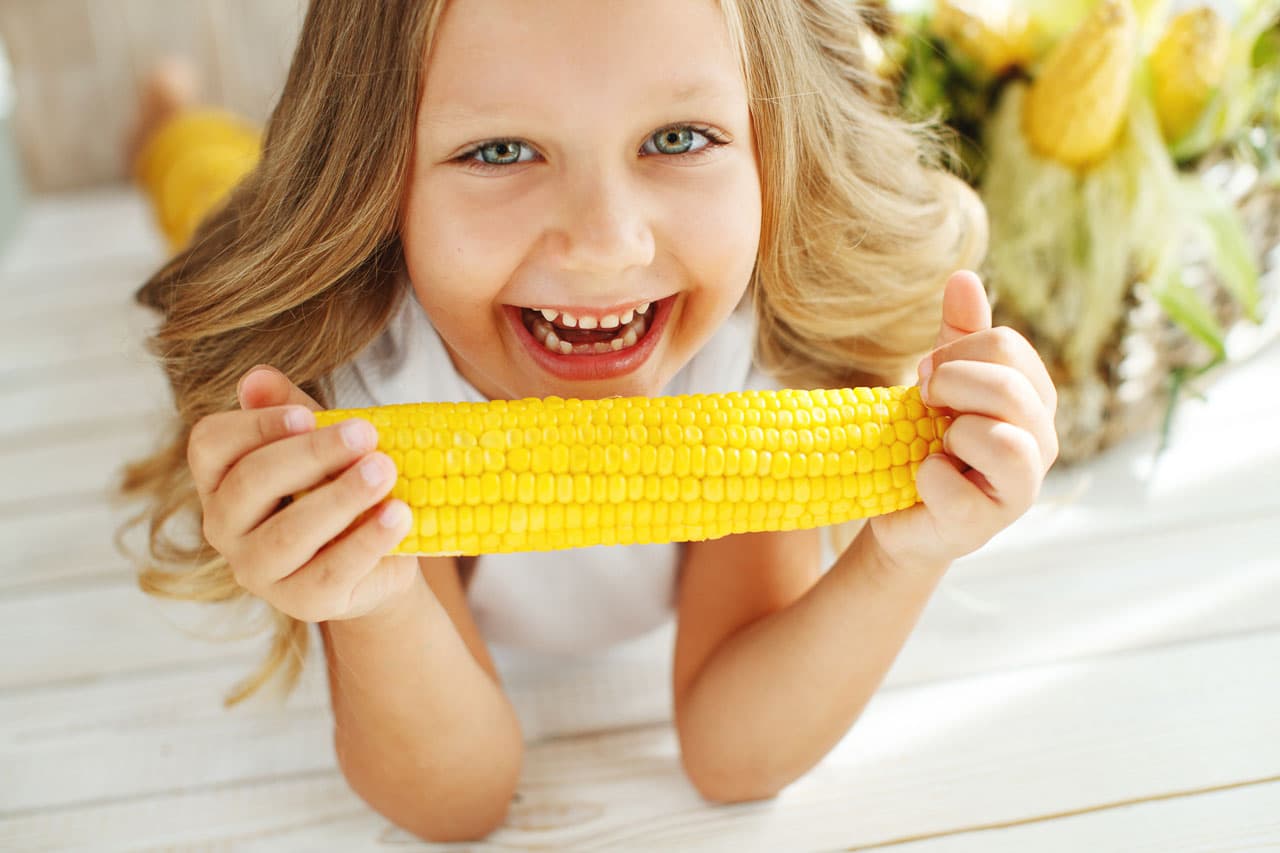
Sweet Corn: When most of us think of the corn we eat – on the cob, canned or frozen kernels – these are all examples of sweet corn, of which there are about 85 varieties. Sweet corn varieties contain higher levels of natural sugars compared to traditional field corn. The sugars in many sweet corn varieties start converting into starch immediately after harvest, so they are best consumed shortly after being picked.
Let’s Talk About Sweet Corn
Of the 85 varieties of sweet corn, they can be broken down into 4 broad categories:
Standard Sweet (SU): These varieties have a good balance of sweetness and traditional corn flavor. They tend to have a slightly creamy texture and are well-suited for boiling, grilling, or steaming. Examples include “Silver Queen” and “Golden Bantam.”
Sugar-Enhanced (SE): Sugar-enhanced varieties have higher sugar content and a longer shelf life than standard sweet varieties. They retain their sweetness longer after harvest. The kernels are tender and can have a crunchy texture. Examples include “Honey and Cream” and “Temptation.”
Super Sweet Corn
Super Sweet Corn, often referred to as “supersweet” or “sh2” (shrunken-2) varieties, take sweetness to the next level. They contain even more sugar than standard sweet or sugar-enhanced types. The sh2 gene causes the kernels to have a wrinkled appearance. These varieties have a longer shelf life and slower conversion of sugars to starch, allowing them to maintain their sweetness for an extended period; their texture can be firmer compared to standard sweet varieties. Some common super sweet corn varieties include:
Super Sweet (sh2): These varieties are known for their high sugar content and prolonged sweetness after harvest. They have a crisp, juicy texture and are often enjoyed for their intense sweetness. Examples include “Mirai” series and “Supersweet Jubilee.”
Triple Sweet (se+sh2): Triple sweet varieties combine the best of both worlds by incorporating the attributes of sugar-enhanced and super sweet corn. They have the extended shelf life of super sweet corn while also offering a tender, juicy texture. Examples include “Xtra-Tender” series and “Bodacious.”
To complicate matters further, the terms “sweet” and “super sweet” are not universal and can vary slightly based on seed companies and regions.
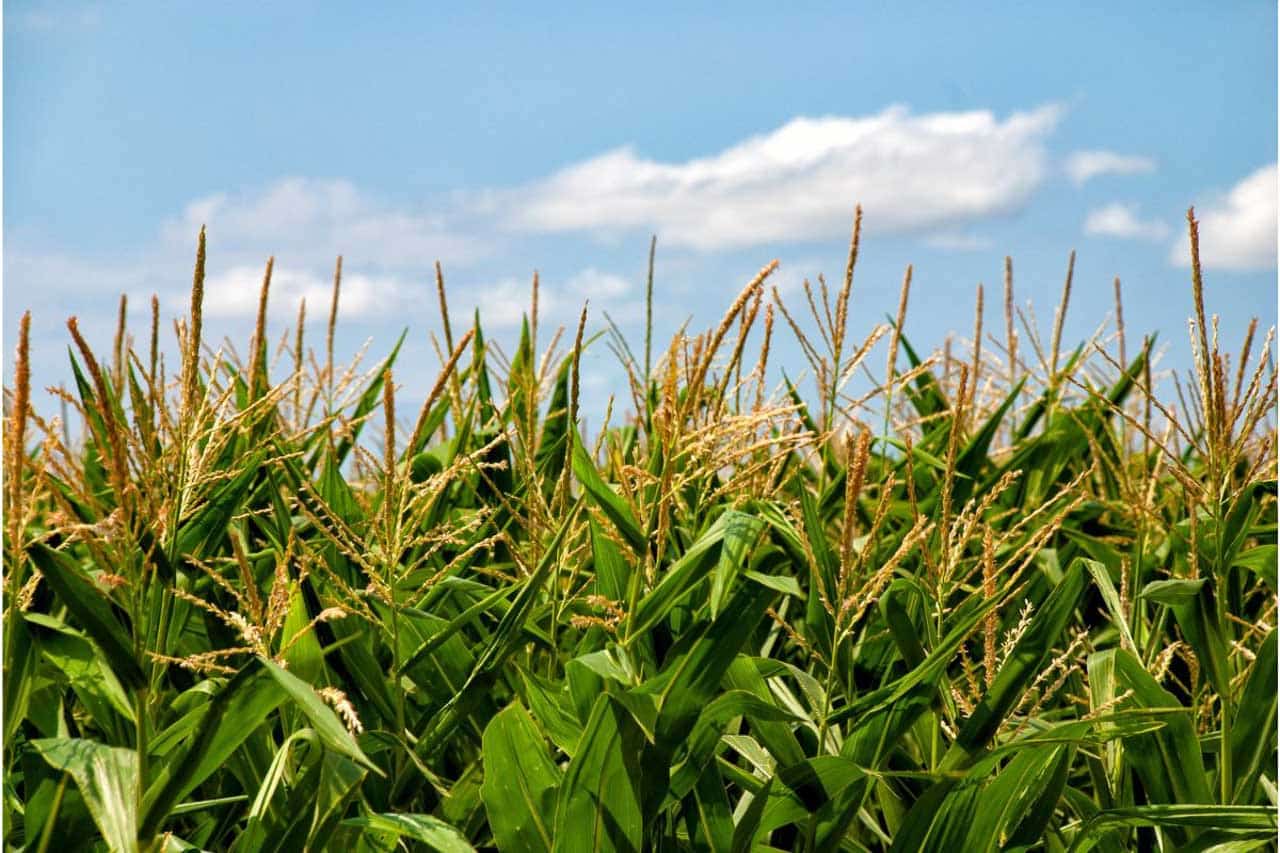
Digestive Tolerance of Corn
It is not surprising that you might tolerate some kinds of corn and not others, meaning that you might digest corn tortillas well, but corn on the cob creates digestive distress. But as you can see from the information above, one corn cob does not equal another, so as with so many aspects of the low FODMAP diet, the only way to truly assess your tolerance is to try some for yourself – and if one batch of corn doesn’t agree with you, maybe the next one will.
In addition, Monash University and FODMAP Friendly have not told us which varieties they have lab tested, so your personal experience is what is going to count.
When Monash and FODMAP Friendly report on vegetables, they rarely give us details about variety. FODMAP Friendly has an entry on Red Globe Grapes (which is a specific variety), but typically, we are not told about varieties. And unless you live in Australia and ate the exact same corn that they tested, from the same farms, and during the same harvest etc., whatever corn you are eating is different from what was tested.
This is true for all fruits and vegetables. We have to look at the lab tests as stakes in the sand from where to begin our exploration of FODMAP tolerance.
Many Types of Corn Products Have Been Lab Tested for FODMAPs
Remember that even though both Monash University and FODMAP Friendly have lab tested various corn products, we have no idea what varieties of corn were in those products, so the lab results should be looked upon as snapshots in time, and a place to begin your exploration of your tolerance to the various corn products available to us. You might not tolerate corn kernels, but you might digest corn chips very well. Or you might digest one brand of frozen corn, but not another! Maybe they are different varieties?
The two apps cover a wide variety of corn products, and you should always consult them for the most up to date information. We will cover the most popular corn products here, with a special mention for the “corn bread” on the Monash app.
Corn Bread Defined
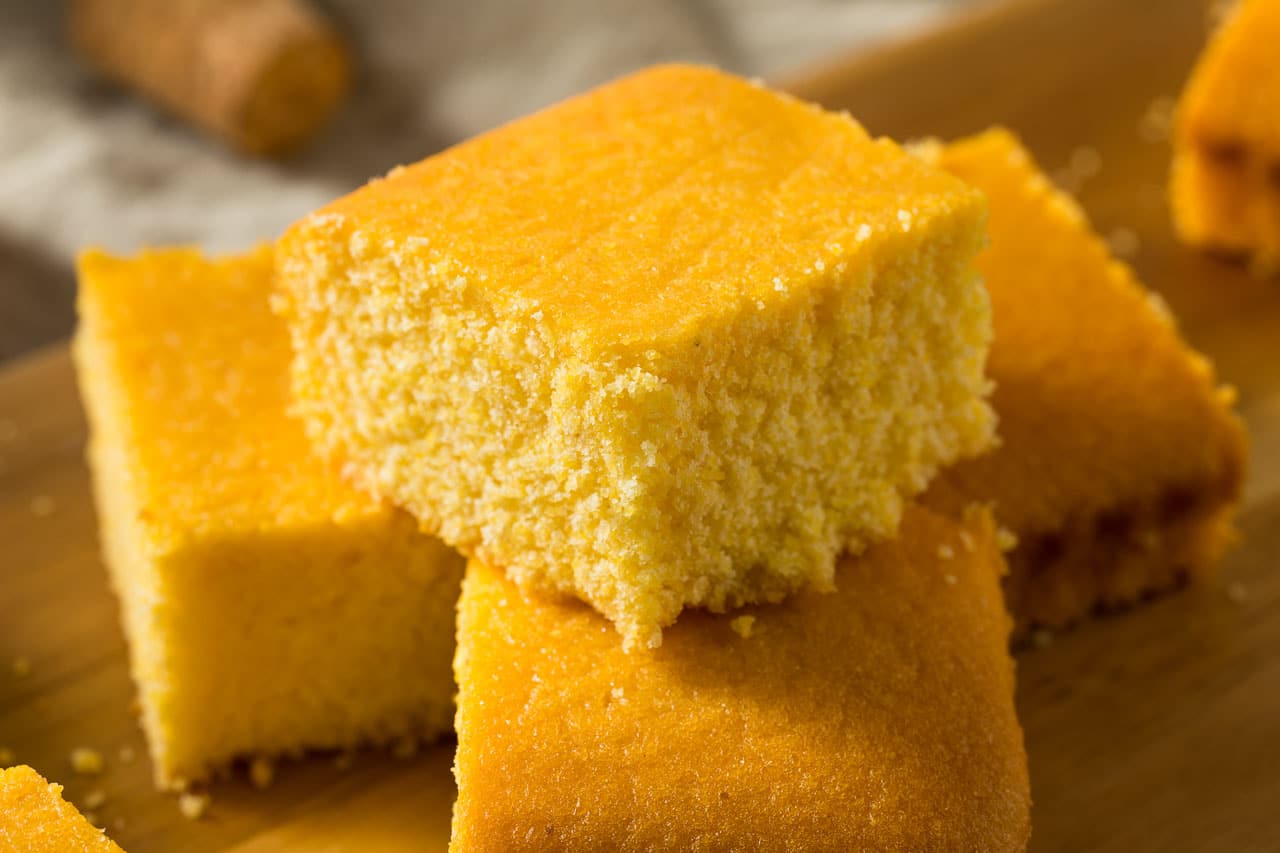
The image that accompanies “corn bread” in the Monash app is a loaf of yeasted bread and is what we would call Anadama bread in the US. It is not what we call “corn bread”, as seen in the image above. This kind of cultural, regional, and national variation in food terms is to be expected, but you have to know what you’re looking at. The kind of yeast bread Monash displays contains far less cornmeal than what Americans call cornbread. FODMAP Friendly has an image of US style cornbread on their entry; serving sizes for all are listed below.
FODMAP Lab Test Results For Various Corn Products
FODMAP Lab Tested Amounts for Various Corn Products
Key: Amounts lab tested by Monash have an “(M)” next to them; those lab tested by FODMAP Friendly have a “(FF)”.
- Corn Chips (tortilla chips): low FODMAP amount is 50 g (M).
- Corn Starch: low FODMAP amount is 100 g (M); 100g (FF).
- Corn Flour/maize flour/cornmeal (this is like US cornmeal): low FODMAP amount is 100 g (M); 100 g, max serve 340 g (FF).
- Canned Creamed Corn: low FODMAP amount is 60 g (M).
- Corn Tortilla with gums and fiber: low FODMAP amount is 47 g (M), about 2 tortillas.
- Corn Tortilla without gums or fiber: low FODMAP amount is 57 g (M), about 3 tortillas.
- Blue Corn Tortillas: low FODMAP amount is 44 g (M), about 2 tortillas.
- Canned Baby Corn, drained: low FODMAP amount is 75 g (M), only trace amounts detected; 80 g, max serve 267 g (FF).
- Canned Corn Kernels, drained: low FODMAP amount is 75 g (M); 75 g FAIL (FF); low FODMAP serving of 18 g (FF).
- Cooked Corn Meal: low FODMAP amount is 250 g (M).
- Corn Flakes Cereal, Kellogg’s: low FODMAP amount is 42 g (M)
- Corn Flakes Cereal, generic: low FODMAP amount is 15 g (M); 30 g, max serve 150 g (FF).
- Corn Hard Taco Shells: low FODMAP amount is 28 g (M), about 2 shells.
- Fresh Corn on the Cob: low FODMAP amount is 38 g (M), about ½ cob.
- Masa Harina: low FODMAP amount is 100 g (M).
- Canned Hominy, drained: low FODMAP amount is 90 g (M).
- Cornbread, US Style: low FODMAP serving size is 35 g, max serve 117 g (FF).
- Popped Corn: low FODMAP amount is 120 g (7 cups). As oil is free of FODMAPs, it doesn’t matter if it is air-popped or oil popped. (M); 25 g (1 handful; FF).
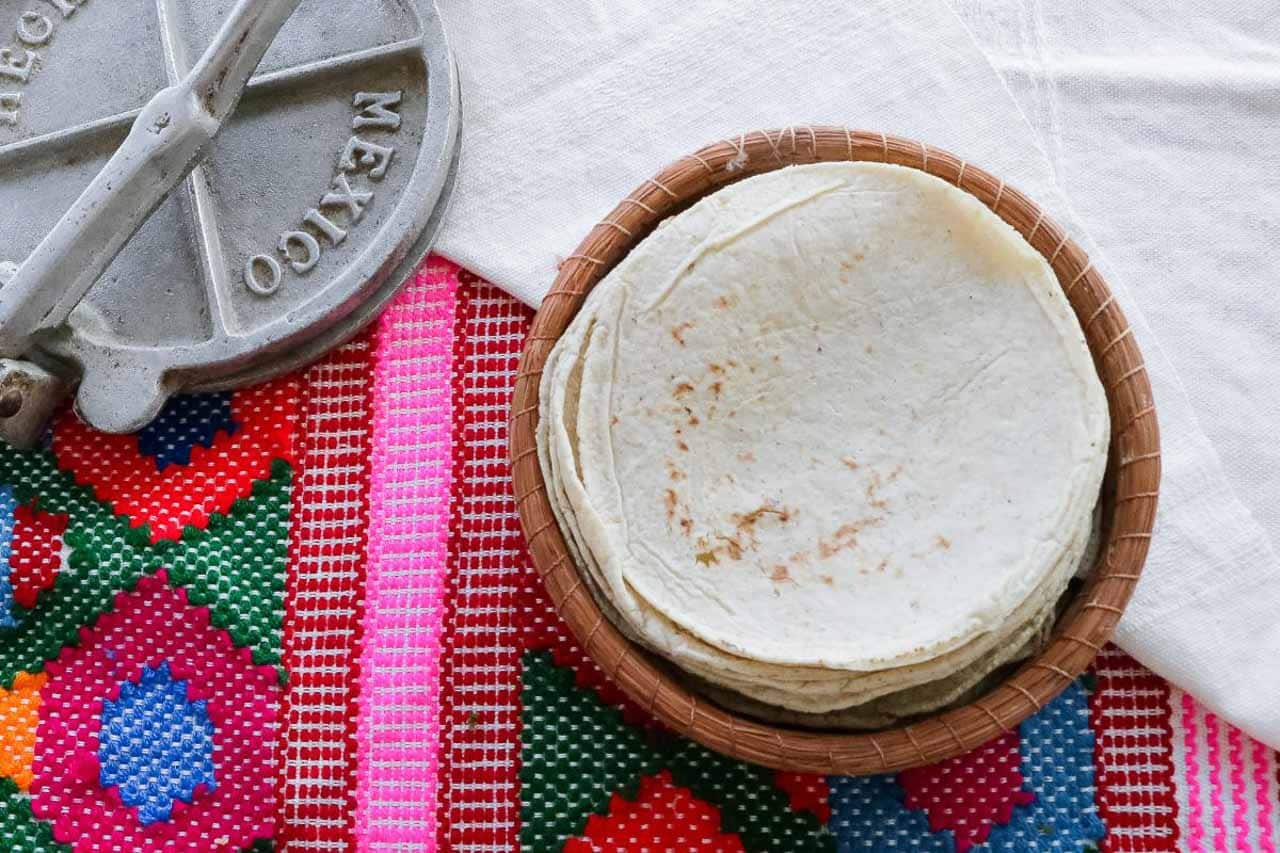
Frequently Asked Questions
Hominy is a food product made from dried maize (corn) kernels that have been treated with an alkali, usually lye or slaked lime. This process is known as nixtamalization, and it involves soaking the corn kernels in an alkaline solution, which causes the outer hull or bran to loosen and the kernels to swell. The process also has the effect of increasing the nutritional value of the corn.
There are two main types of hominy:
Whole Hominy: In this form, the entire corn kernel, including the hull and germ, is treated and swollen. This results in larger, softer kernels that are commonly used in traditional dishes like posole, a hearty Mexican stew.
Grits or Broken Hominy: After nixtamalization, the kernels are dried and then ground or broken down into smaller pieces. This results in a coarser texture that is often used to make dishes like grits, a popular Southern American dish, although some grits recipes use a coarse cornmeal that is not nixtamalized.
Hominy has been a staple food in many cultures for centuries due to its improved nutritional profile and altered texture. The nixtamalization process makes nutrients like niacin (Vitamin B3) more bioavailable and also improves the flavor and texture of the corn. It is an important ingredient in various dishes, particularly in Mexican, Southern American, and Native American cuisines.
Hominy is commonly used to make dishes such as:
Posole: A traditional Mexican stew made with whole hominy and typically includes meat (often pork), chilies, and various seasonings.
Grits: A Southern American dish, often made from broken hominy (but also sometimes simple cornmeal is used), and often served as a side dish with breakfast, or as a base for savory or seafood dishes.
Hominy Soup: A simple soup made by simmering hominy with broth and adding various ingredients like vegetables and meat.
Masa: Ground hominy is further processed into masa, a dough used to make various corn-based dishes like tortillas, tamales, and pupusas.
The alkali treatment not only transforms the corn’s texture and flavor but also imparts a distinct aroma and taste to dishes made with hominy. You can see the fluffy hominy kernels in the soup image below.
Yes, hominy has a lab tested low FODMAP serving of 90 g (about ½ cup), according to Monash University.
Yes! In the US, cornmeal is comprised of many different kinds of ground corn, from white corn, to yellow, to blue. Then, it is categorized by grind, be it fine, medium or coarse. All of these grinds will weigh differently per volume, so even without knowing variety, you can see how the Monash University and FODMAP Friendly smartphone app entries lack information that we need.
The various grinds have various uses:
Fine Ground Cornmeal: This type of cornmeal has a finer texture and smoother consistency. It’s often used in recipes where a smoother texture is desired, such as for making cornbread, muffins, pancakes, and some baked goods. Fine ground cornmeal produces a softer and less gritty texture in finished dishes. In the US it might be called corn flour, as seen on the package in the image below.
Medium Ground Cornmeal: Medium grind cornmeal has a slightly coarser texture compared to finely ground. It retains some of the natural graininess of the corn and is commonly used in dishes like polenta and certain types of bread. It can provide a heartier texture and a more pronounced corn flavor.
Coarse Ground Cornmeal: Coarse ground cornmeal has the largest granules and the most pronounced texture. It’s often used for making dishes like Southern-style cornbread, where a rustic and crumbly texture is desired. Coarse ground cornmeal can also be used for breading and frying foods, as its texture adds a delightful crunch.
These categories are not strictly standardized, and the exact definitions of “fine,” “medium,” and “coarse” can vary from one producer to another. Some brands might have variations within these categories as well. The choice of cornmeal grind depends on the intended use and the desired texture in the final dish.
In our image below we show, left to right: conventional supermarket cornmeal; finely ground corn flour; cornstarch (in front); medium grind cornmeal; coarse grind cornmeal.
I chose several Bob’s Red Mill products so that you could see how one manufacturer differentiates. The cornstarch is center bottom of image.
Lesser quality cornmeal, less expensive, and cornmeal brands you often find in the supermarket are made by grinding dried corn utilizing metal grinders. A significant portion of the hull and germ is eliminated, and the resulting meal has an even consistency, but lacks distinctive taste attributes. It is in the image, far left, above and below.
On the other hand, stone-ground cornmeal, where the corn undergoes literal grinding between two slowly moving stones, retains a portion of the hull and germ. This particular method yields a coarser and more uneven, rustic texture and imparts a more captivating, and often more robust, flavor profile. Simply put, some say it is “corny-er”! These two types of cornmeal can be used interchangeably, as long as the grind level is equivalent. In other words, a medium grind cornmeal can be substituted for a medium-grind stone-ground cornmeal.
In the image below, take a look at the medium grind supermarket cornmeal on the far left, and the stone-ground equivalent, second from right. You can see that the latter is more rustic and uneven in texture.
Yellow cornmeal is made from yellow corn, and white is made from white. They can be used interchangeably in recipes, as long as the grind level is the same as what is called for.
Their flavor can be different, but it will all depend on variety of course; many feel that white cornmeal has a more delicate, subtle taste.
Blue cornmeal is made from blue corn. It is very popular in southwestern cooking.
Luckily for us, Monash University has lab tested blue corn tortillas and they are low FODMAP in 44 g amounts, which its about 2 tortillas.
The differences between cornmeal, corn flour and cornstarch are going to depend on where you are in the world.
In many parts of the world, especially in the United Kingdom and some other English-speaking countries, the term “cornflour” is used to refer to what Americans typically call “cornmeal”, and sometimes to what Americans call “cornstarch”. This can create confusion for those accustomed to American culinary terminology.
In these regions, “cornflour” usually refers to finely ground maize flour, which is used in a variety of culinary applications, including baking, breading (which would be like American cornmeal), or thickening (which would be what American call cornstarch).
In contrast, in the United States and Canada, “cornmeal” is used to describe ground maize – and can have fine, medium or coarse texture, and is used to make dishes as varied as cornbread, muffins, grits, and polenta.
In the US, cornstarch is a very fine, powdery texture, white in color, and primarily used as a thickener in cooking, and is also used in personal care products, and in the medical industry, textile industry, and also in papermaking. Just take a look at a bottle of “baby powder”. It’s cornstarch!
Cornstarch, also known as cornflour in some parts of the world, is a fine, white powder that is derived from the endosperm of corn (maize) kernels. It is primarily used as a thickening agent in cooking and baking due to its ability to create a smooth, gel-like texture when mixed with liquid and heated. Cornstarch is a versatile ingredient with various culinary and non-culinary applications. (It works wonders in this Fresh Blueberry Pie, and this Vegan Chocolate Pudding).
Cornstarch is produced by separating the starchy endosperm of corn kernels from the other components through a process known as wet milling. The corn kernels are soaked in water, and the starch is then separated, washed, and dried. The resulting starch is ground into a fine powder, creating cornstarch.
Polenta has always been more identified with northern and central Italy, and for anything culinary related to those regions, we always turn to Lynne Rossetto Kasper and her award-winning tome, The Splendid Table, Recipes from Emilia-Romagna, The Heartland of Northern Italian Food.
“For many in the Emilia-Romana, it took Post World War II affluence to finally banish polenta as the mainstay of their diet. Since the early 1700s polenta and beans head nourished peasants and laborers, especially in Emilia. The corn was brought from the New World in flourished on the Po River plane. Corn was cheap and plentiful when wheat was expensive and scarce. Before corn arrived in Italy from the Americas, thick porridges of water and ground grain were the food of laborers, foot soldiers, and farm workers. Buckwheat was popular along the Swiss/Italian border. The Romans ground dried beans and ancient strains of wheat and millet. So when cornmeal came upon the scene, its niche was already established. For many, it replaced wheat. Lamentably, corn lacked many of wheat’s nutrients, and pellagra, a disease caused by niacin deficiency, became a major problem among polenta eaters. Polenta is so identified the northern Italy that southerners disparagingly call northerners mangiapolenta, ‘polenta eaters’.”
Polenta can be somewhat soft, or it can be firmer, chilled, sliced and sautéed or grilled, as seen below.
For both polenta and grits, medium grind or coarse cornmeal is often used. However, the specific type of cornmeal used for polenta and grits can vary based on regional preferences and availability. Let’s delve into the details:
Polenta: Polenta is a traditional Italian dish made from ground cornmeal, usually medium or coarse grind. In Italy, a specific type of cornmeal known as “polenta cornmeal” is often used, and labeled as such. This coarser texture gives the polenta a hearty and rustic quality. Traditional Italian polenta is made by slowly cooking the cornmeal with water or broth until it thickens into a creamy consistency. A typical ratio is 4:1 water to cornmeal, but this can vary depending on the cook, and the techniques employed.
Grits: Grits are a popular Southern American dish made from ground corn, specifically dried and coarsely ground corn, which creates a texture similar to polenta. In the Southern United States, you’ll often find “grits” cornmeal labeled as such in stores. Grits can be made with regular cornmeal, or with corn that has been nixtamalized (see below). Grits are a staple breakfast dish and also served in various ways, such as creamy and topped with cheese, shrimp, or other savory ingredients.
While both polenta and grits are typically made from medium grind or coarse grind cornmeal, the terminology can differ based on regional culinary practices, cultural preferences, and brands.
We love what Marcella Hazan says about polenta in her classic cookbook, Marcella’s Italian Kitchen: “Polenta consists of corn flour, water, and a well-lubricated elbow. The flour becomes polenta when, with constant stirring, it absorbs all the water and turns into a homogenous, soft, yet compact mass that wipes cleanly away from the side of the pot”.
In the image below you can see medium grind cornmeal on the left, and coarse grind on the right. They are distinctly different, and will yield different results in recipes. A recipe for grits or polenta might call for one or the other.
Maybe you have seen tubes of polenta at the market and wondered what they are? They are sometimes referred to as ready-to-eat, or ready-to-heat polenta. It is fully cooked polenta that you can slice, heat and eat.
Monash University says cooked cornmeal is low FODMAP in 250 g amounts. Use this as your guide.
Check out our recipe for Mini Polenta Pizzas!
When you see the words “instant” or “quick cooking” on a package of polenta or grits, it means that the corn product has been pre-cooked and dehydrated, which means you can prepare them in significantly less cooking time than traditional versions.
No one has done a lab testing comparison between instant and regular cornmeal products for FODMAP content. You could use the findings that we do have from Monash and FODMAP Friendly for cooked cornmeal as a place to start, if you want to try these fast cooking versions.
Below is a picture of polenta as a side dish, with a pork ragu.
Masa Harina is a fine-textured corn flour that has undergone nixtamalization, a process involving the soaking of corn in lime water, also known as calcium hydroxide or slaked lime. This is an alkaline product that changes the nature of the cornmeal in terms of texture, flavor, and even increases its digestibility and nutritional value.
Masa harina holds essential significance in crafting authentic, homemade corn tortillas and tamales. Rooted in its name “masa,” the Spanish term for “dough,” it encapsulates the traditional dough employed in the creation of corn tortillas.
Masa harina can be used as a thickener, similar to cornstarch. We use it in our Tamales and to thicken our authentic All Beef Chili.
We do not suggest using masa harina interchangeably with other cornmeal that has not been nixtamalized.
In the image below, you can see the masa harina lower left. It is very soft and powdery, more akin to the fine corn flour (center top), and cornstarch (lower right).
Nixtamalization is the process of soaking corn in alkaline lime water, also known as calcium hydroxide, or slaked lime. This is an alkaline solution that changes the nature of the cornmeal in terms of texture, flavor, and even increases its nutritional value.
Below is a closeup image of masa harina. Note its powdery texture.
All pure oils are 100% fat and contain no FODMAPs (carbohydrates), including corn oil.
Corn fiber refers to the dietary fiber extracted from corn (maize) kernels. Dietary fiber is a type of carbohydrate that cannot be digested by the human body’s enzymes, and it plays an essential role in promoting digestive health and overall well-being.
Corn fiber is derived from various parts of the corn kernel, including the bran, husk, and germ. It consists of both soluble and insoluble fibers, each offering different health benefits. Soluble fiber dissolves in water and forms a gel-like substance, while insoluble fiber does not dissolve and adds bulk to the stool.
Health Benefits of Corn Fiber
Digestive Health: Dietary fiber, including corn fiber, helps promote regular bowel movements and prevents constipation by adding bulk to the stool and aiding in its movement through the digestive tract.
Blood Sugar Regulation: Soluble fiber can slow down the absorption of sugar, which helps regulate blood sugar levels. This can be particularly beneficial for individuals with diabetes.
Heart Health: Soluble fiber can help lower cholesterol levels by binding to cholesterol in the digestive tract and preventing its absorption into the bloodstream. This can contribute to a reduced risk of heart disease.
Weight Management: High-fiber foods are often more filling and can help control appetite, which can be helpful for weight management and preventing overeating.
Gut Microbiome: Dietary fiber serves as a source of nutrition for beneficial gut bacteria. A healthy gut microbiome has been associated with various aspects of overall health, including immune function and mental well-being.
Maltodextrin is found in many processed foods, where it is used as a thickener and/or filler. It is a water soluble white powder with a neutral taste that can be derived from corn, but also from rice, wheat or potato starch.
Maltodextrin is considered low FODMAP, regardless of its origin.
Maltodextrin is used as a filler in one of our favorite products: FreeFod Garlic Replacer.
Yes, baby corn is low FODMAP! Monash University has lab tested canned, drained baby corn and 75 g (about 1 cup) is low FODMAP. That is a generous portion! Time for a stir-fry!
A lot of corn grown in the US is GMO, although it is also easy to find organic corn products and the labels often list that prominently.
GMO foods have no effect on FODMAPs.
Enjoy our Grilled Corn Salad with Parmesan & Parsley, shown below, with organic corn from your farmers market.
Corn syrup and high fructose corn syrup (HFCS) are both sweeteners derived from corn, but they have different compositions and are processed differently.
We have an article that addresses them specifically from a FODMAP perspective called, Corn Syrup vs. High-Fructose Corn Syrup.
Corn Syrup: Corn syrup is a liquid sweetener made from corn starch through a process called hydrolysis. The starch in corn kernels is broken down into simpler sugars, primarily glucose, through the action of enzymes. This results in a syrup that is mainly glucose with a small amount of maltose (another sugar).
Corn syrup is commonly used as a sweetener in various foods, including baked goods, candies, and beverages. It’s also used in the production of certain processed foods to enhance texture, prevent crystallization, and act as a binder.
High Fructose Corn Syrup (HFCS): High fructose corn syrup is a sweetener that is derived from corn syrup. HFCS is created by further processing corn syrup to convert some of its glucose content into fructose. This conversion is achieved using enzymes that can increase the fructose content to varying levels, typically around 42% or 55%, compared to glucose.
The higher fructose content in HFCS gives it a sweeter taste compared to regular corn syrup. HFCS is often used as a sweetener in soft drinks (sodas), processed foods, and various packaged goods because of its sweetness and ability to enhance flavors.
The image below shows dark corn syrup on the left, and light corn syrup on the right. We use light corn syrup in our Gingerbread Caramel Crunch Popcorn, which is not to be missed!
Corn syrup primarily consists of glucose, while HFCS contains both glucose and fructose. The higher fructose content in HFCS contributes to its sweeter taste and makes it high FODMAP.
The image below is of our Low FODMAP 2-Ingredient Coconut Popsicles; coconut milk and light corn syrup. That’s it!
“Glucose-fructose syrup” is a term used to describe a sweetener that contain a mixture of glucose and fructose. Sometimes it is written as “fructose-glucose”.
The fructose content in glucose-fructose syrup can vary depending on the specific syrup and its production methods. In some cases, the fructose content may be around 42% to 55%, similar to HFCS.
When the fructose is in excess of the glucose, as it would be if the fructose is 55%, then it would be high FODMAP.
It’s important to note that the specific composition and labeling requirements can differ amongst the US, Canada and Europe, and they may even vary within different countries in Europe.
Some manufacturers provide additional information on their websites or product literature about the fructose-to-glucose ratio in their syrups. If you’re concerned about the exact ratio, you might need to do a bit of research specific to the brand or product.
Depending on the country or region, there might be labeling regulations that require certain terms or disclosures for products with specific sugar compositions. However, this can vary, so it’s best to check local regulations.
If you’re seeking detailed information about the fructose-to-glucose ratio, you can consider reaching out to the manufacturer directly. They may be able to provide more specific information about their product’s composition.
While this is not foolproof, if it is listed as “fructose-glucose” we assume fructose is in greater proportion and that the ingredient would not be appropriate during the Elimination Phase of the low FODMAP diet. Also, in general, if you know that fructose is an issue for you digestively, you might want to steer clear altogether. We have an article for you on Fructose Intolerance & Malabsorption.
Ingredient lists will vary but most candy corn does have a low FODMAP serving size.
Many brands are made with honey, which does have a Green Light low FODMAP portion according to Monash in 1 teaspoon (5 g) amounts! We know that’s a tiny amount, but candy corn are diminutive and there is NO WAY each candy corn has that much honey in it.
Also, honey is listed after sugar and regular corn syrup on many candy corn particular ingredient lists (see our Candy Ingredient article), so it is a very small amount.
There are other candies, too, like little candy pumpkins, that are made from the same ingredients as candy corn and the same serving size approach is recommended. So, have a candy corn – or two or maybe even three! Eat to your tolerance.
Corn milk, also sometimes referred to as corn juice, is the sweet, starchy liquid produced from raw corn kernels. It is dairy-free, and can be used in cooking and baking.
The Takeaway
Corn comes in many guises, from fresh corn on the cob, to canned products, dried ground flours, meals and starches, popcorn, corn chips, tortillas, and more.
Many corn products have a low FODMAP serving size. As always, this is not a guarantee that you will digest it well. Only you can tell what is right for you by conducting structured Elimination and Challenge Phases.
Always bear in mind that with the dozens and dozens of varieties if corn, that if you do not do well digestively with one particular variety of fresh corn, or one brand of corn chips, that it is worth trying another.
While corn is the largest GMO crop in the US, GMOs have no affect on FODMAPs, so that is not a concern. That said, it is very easy to find organic corn products; just check the labels.
We have many recipes for you that feature corn. Here are just some.
Low FODMAP Corn Recipes
- Cornbread and Wild Rice Stuffing with Pecans & Cranberries
- Blue Cornbread
- Skillet Low FODMAP Scallion Bacon Cornbread
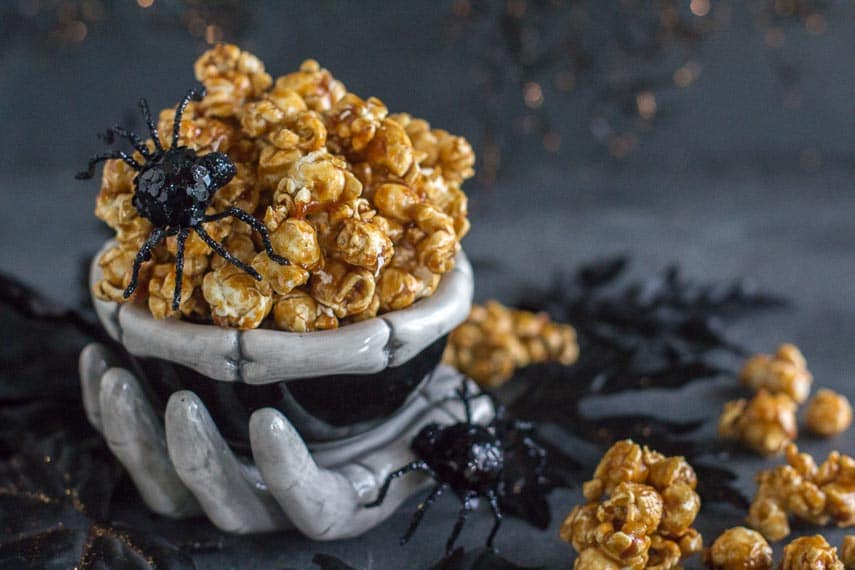
- Skillet Low FODMAP Mushroom Kale Cornbread Stuffing
- Shrimp with Grits
- Low FODMAP Shredded Pork Nachos with 3-Cheese Beer Queso
- Mile High Low FODMAP Chili Nachos with Avocado Crema
- Salad Nachos
- Slow Roasted Shredded Pork Tacos
